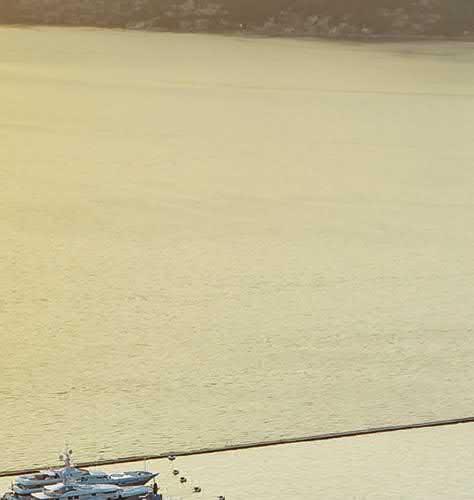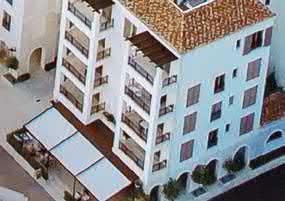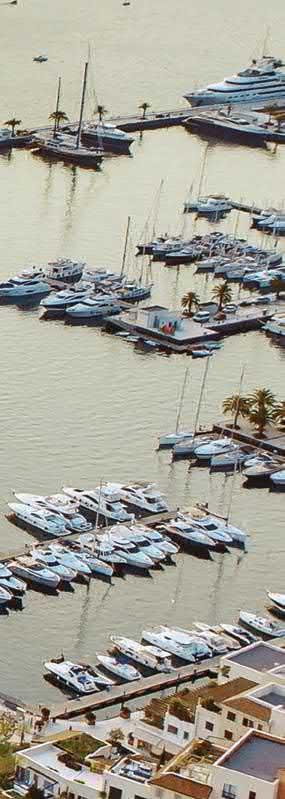March/April 2023


March/April 2023


SF Marina is a world-renowned expert on developing new or existing premium marinas. We provide state-of-the-art floating breakwaters and concrete pontoons to anyone anywhere who plans on building a marina with superyacht berths. And who wants it to still be there after the storm.
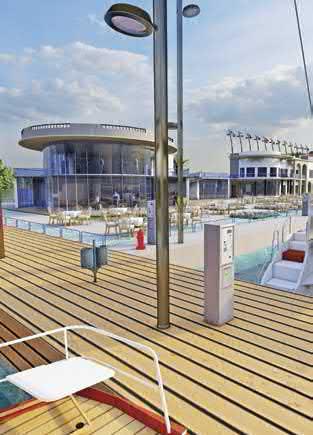

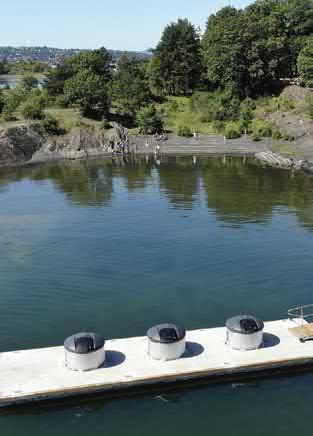


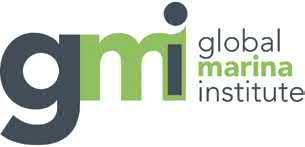
Ismailia Yacht Marina, the new era of the Suez Canal; A nautical tourism centre for Piombino; Becoming a master at planning marinas
Feedback from marina owners and customers; Family success in the TransEurope Marinas network
Marina Izola in Slovenia is a well-sheltered, forward-thinking facility with an ideal location in central Europe. Marina manager Vladimir Gavran talks shop
The 2023 AMI Conference & Expo, held in January/February in Daytona Beach, Florida was a record-breaking event
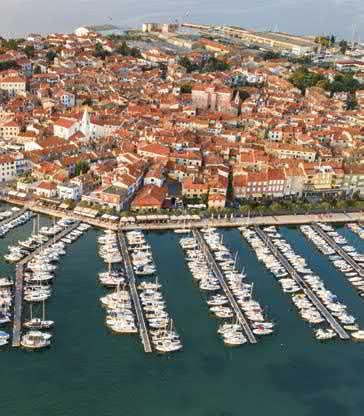
On the cover: Marina Izola is one of just a handful of marinas to lie along Slovenia’s tiny Mediterranean coastline. Marina owners believe its location is one of its greatest assets and strive to maintain connection with the fisherman’s town on its doorstep and the broader Istrian culture and countryside. See p. 40

HEAD OFFICE MAILING ADDRESS & SUBSCRIPTION ENQUIRIES
Loud & Clear Publishing Ltd,
School Farm, School Road, Terrington St. John, Cambridgeshire PE14 7SJ, UK
Editor
Carol Fulford
T: +44 (0) 1945 881018
E: carolfulford@marinaworld.co.uk
Advertisement/Commercial Director
Julia Hallam
T: +44 (0) 1621 855 890
E: juliahallam@marinaworld.co.uk
Administration Manager
Corinna Francis T: +44 (0) 1621 855 890
E: corinnafrancis@marinaworld.co.uk
Finance Manager
Magdalena Charman T: +44 (0) 1403 733678
E: accounts@marinaworld.co.uk
Advertisement Production
Charlotte Niemiec T: +44 (0) 7446 056473
E: adstudio@marinaworld.co.uk
NORTH AMERICAN OFFICE
Sales Director Americas
Philippe Critot
PO Box 29759, Los Angeles, CA 90029-0759, USA
T: +1 323 660 5459 F: +1 323 660 6030
E: pcritot@marinaworld.com
FRENCH OFFICE
Publisher’s Representative
Catherine Métais T: +33 6 60 17 75 81
E: catherinemetais@marinaworld.com
ITALIAN OFFICE
Advertisement Representative Ediconsult Internazionale srl
piazza Fontane Marose 3, 16123 Genoa, Italy
T: +39 010 583 684 F: +39 010 566 578 E: genova@ediconsult.com

The arrival of longer and beamier vessels, including catamarans, has had the greatest boat design impact on the way marina infrastructure has been planned and designed in decades. The vessel, whatever its size, has been either sail or power (both requiring dockside electricity and water), and the latter also needing petrol or diesel from the fuel dock. Established services; established facilities.
In the last few years, the most radical developments have probably been in-slip pump-out and – more rarely – in-slip fuelling for large yachts. The next radical move is the installation of charge points for the power boats that will increasingly be “electric”.
It’s a very hot subject. The organisers of AMI Conference & Expo, held in Florida as January tipped into February this year, selected ‘The Future of Boat Design’ as a second marina keynote topic. Association of Marina Industries (AMI) chairman, John Swick, explained the rationale: “It is extremely important that the marinas and boat and engine manufacturers have an open dialogue about what the future holds. Infrastructure changes require a significant amount of planning and lead-time, so the earlier these conversations can be happening, the better,” he said.
Oscar Siches agrees on the need to plan carefully, and investigate thoroughly. His article on electric propulsion (pages 51-53) urges us to make efforts to truly understand the technology and its implications, and the many factors that should be taken into account when selecting power sources, battery power, and charging speeds and methods. There is a learning curve with all new technology and there will be hurdles along the way, a likely raft of legislation, and serious challenges –such as safe disposal of batteries.
Marina World (ISSN 1471-5856) is published bimonthly by Loud & Clear Publishing Ltd, School Farm, School Road, Terrington St. John, Cambridgeshire PE14 7SJ, United Kingdom.
The 2023 US annual subscription price is $160. Airfreight and mailing in the USA by agent named WN Shipping USA, 156-15 146th Avenue, 2nd Floor, Jamaica, NY 11434, USA.
Periodicals postage paid in Jamaica NY 11434. US Postmaster: Please send address changes to MARINA WORLD, WN Shipping USA, 156-15, 146th Avenue, 2nd Floor, Jamaica, NY 11434, USA.
Subscription records are maintained at Loud & Clear Publishing Ltd, School Farm, School Road, Terrington St. John, Cambridgeshire PE14 7SJ, United Kingdom.
Air Business Ltd is acting as our mailing agent.
Marina World is available on subscription at the following cost:
1 year (6 issues) – £80.00 Sterling ($160)
2 years (12 issues) – £140.00 Sterling ($280)
No part of this publication may be reproduced without the prior permission of Loud & Clear Publishing Ltd, the copyright owners. Upon application, permission may be freely granted to copy abstracts of articles on condition that a full reference to the source is given.
Printed in the UK by Stephens & George © 2023 Loud & Clear Publishing Ltd
Views expressed by individual contributors in this issue are not necessarily those of Loud & Clear Publishing Ltd. Equally, the inclusion of advertisements in this magazine does not constitute endorsement of the companies, products and services concerned by Loud & Clear Publishing Ltd. The publisher reserves the right to refuse advertising.
A fleet of electric boats jostling for berths at your marina isn’t likely to happen soon. But demand for charging infrastructure will arrive as the market share for electric boats will inevitably rise: prices (currently high) will drop as these boats become more popular; and range, which is already far longer than for early models, extends even further. A long-haul trip by electric boat isn’t, however, likely to be feasible for many years.
Don’t be tempted to lock the topic away! Although there may be little or no demand as yet at your marina, it’s coming. While there are sound arguments that refute the truly ‘green’ and certainly ‘moral’ ethos of electric power (e.g. the effects of mineral mining), in terms of reducing polluting emissions, if power comes from a clean source, the electric boat is a winner. And it is here, now, and all set to be an increasingly large part of the global leisure fleet in the future.
Carol Fulford Editor


“My marina is located in a reservoir that
Deep vs Shallow Wind

UK: Demand for berths exceeds pre-pandemic levels according to insight revealed in British Marine’s newly released UK Marina and Mooring Market Report (2021-2022).
A total of 173 marinas took part in the survey, i.e. 23% of the UK’s 723 marinas, representing 42% of the country’s marina berths and moorings. Some key findings are as follows:
• Revenues from marina berthing income grew 13% to £283 million in 2021/22, reflecting the impact of the sector’s recovery from the pandemic.
• Gross profits accounted for an average of 20% of revenues per marina. Total gross profits related to marina berthing for the entire sector increased 32% to £55 million.
• The sector’s direct Gross Value Added (GVA) contribution to UK GDP through marina berthing income increased 16% to £127 million from the previous year. The ‘added value’ created by the marina sector represents 45.1% of total sector output.
• Taking into account indirect and induced economic effects, from marinas’ supply chain spending and the spending of employees supported by marinas and their suppliers, the UK marina sector generated a combined total of £253 million in GVA.
• Despite increasing challenges from inflation and declining UK economic growth, marina businesses are optimistic about their market, with 54% of members still positive about prospects, citing the continued effect of the pandemic boom in secondhand boat sales and demand for berths over the last year. 56% of respondents reported that demand for berths was still above prepandemic levels.
• Occupancy rates for April 2022, at the start of the boating season, averaged 90% across all mooring providers, with rates highest at inland marinas (91%) compared to coastal (89%).
• Due to a surge in demand and rising inflation after lockdown, the yield per berth (which, alongside occupancy, is a key metric for marina berthing productivity), grew 13% to £3,551.
• With supply increasingly strained, 19% of marinas that responded to the survey are looking to expand over the next 12 months. The focus is upon adding pontoon berths rather than dry storage.
SPAIN: Marina Port Vell Barcelona has been named as the ‘Preferred Superyacht Marina’ for the 37th America’s Cup, to be held in Barcelona between August and October 2024.
Booking of berths at the marina during this period will be managed via a centralised booking system run by the official superyacht services partner BWA Yachting. Over 40 boats and superyachts have already requested mooring.
Grant Dalton, CEO of ACE Barcelona and Emirates Team New Zealand, comments: “From the start of our discussions with Barcelona and Catalunya as the potential host venue

for the America’s Cup event, we have been very impressed by the extent and quality of marinas, ports and facilities that can be offered to visiting yachts.”
“Marina Port Vell is unique in its position in Port Vell, so close to the city centre and next to the team bases for the America’s Cup event so we are very pleased with this partnership. We have no doubt that visiting superyachts will have an incredible experience in this world class marina,” he adds.



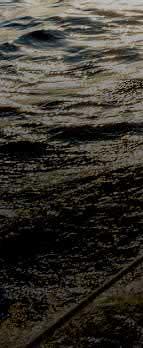




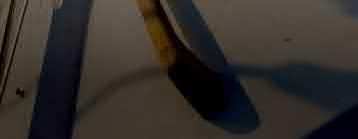




PierPump – Trouble-free disposal of waste and bilge water from boats and yachts.






When installing a wastewater management system harbor operators have to make several decisions depending on the location, number of berths and size to find the optimal system.
The Vogelsang PierPump is a customer-oriented high-performance solution, which is easy to operate and allows bilge water or black water to be pumped directly into the sewage system. The integrated rotary lobe pump means that the PierPump is resistant to foreign matter, so that the vacuum extraction process does not come to stop if the wastewater contains foreign matter. Wastewater tanks are vacuum extracted in a very short time, and the voyage can continue.








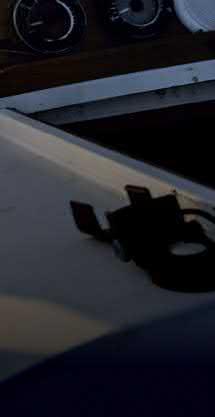














VOGELSANG � LEADING IN TECHNOLOGY vogelsang.info
GREECE: D-Marin and Spanish marina group Marinas del Mediterranéo have announced a partnership that will bring three marinas into D-Marin’s premium marina network.
Puerto Deportivo de Estepona, Puerto Marina La Duquesa and Puerto Marina del Este, all located on the Costa del Sol, offer a total of 1,000 berths and are the first in Spain to join the D-Marin network.
D-Marin CEO, Oliver Dörschuck, said: “We’re delighted to be forming this new partnership with Marinas del Mediterranéo, which promises to be a highly successful one. This is a milestone in our strategy to expand into the Western Mediterranean, with more

Don’t miss our digital newsfeed. Sign up for free at www.marinaworld.com
Highlights from February/March:
• Cyprus: Upgrade for Paphos Marina
• UK: Waterfront plans for Southampton’s Town Quay
• Seychelles: EOI for Praslin marina
• Australia: Crediting ‘superyachtready’ marinas
• Bahamas: Heads of Agreement for Harbour Island and Torch Cay
• Saudi Arabia: Construction starts on Jeddah Central
• USA: Forest Development in further Florida bids
www.marinaworld.com
marinas to come.”
Jose Carlos Martin, founder of Marinas del Mediterranéo, added: “Partnering with D-Marin was an easy decision for us as we are very aligned in our desire to exceed our customers’ expectations, especially in digital capabilities, thereby becoming part of the international D-Marin sales network. Welcoming D-Marin to Spain and working together for our customers’ benefit is our key focus now and for many years to come.”
USA: Suntex Marina Investors has acquired Fair Haven Yacht Works in Fair Haven, New Jersey and Roosevelt Lake Marina in Roosevelt, Arizona.
Fair Haven Yacht Works is a familyoriented, full-service marina located on the scenic Navesink River. It is a safe, secure and protected facility with four docks offering 81 slips for boats of 15 to 55ft (4.5 to 17m) in length and a large mooring field.
Situated on approximately 70 acres (28ha), Roosevelt Lake Marina offers guests the finest amenities in the area including wet storage, dry storage, on site dining, fuel sales, boat rentals, tent sites with power and 35 RV pad sites with full hook-ups. Its 258 wet slips and 146 covered and uncovered dry storage spaces can accommodate vessels ranging from 30 to 55ft (9 to 17m). It is the only marina on the lake.







USA: Port 32 Marinas has purchased Lighthouse Point Marina on the Intracoastal Waterway, one of South Florida’s most admired waterfront properties. It is the first marina acquisition by the new Port 32 leadership team.
“Lighthouse Point Marina is a special lifestyle property in an extraordinary location, tucked just inside the clear Atlantic waters of the Hillsboro Inlet. Here at Port 32, we love cruising with friends and family, saltwater fishing and ice-cold drinks on the waterfront, which makes Lighthouse Point a perfect fit for our growing portfolio of premier coastal marinas,” said Austin Schnell, the new CEO of Port 32 Marinas.
With 102 wet slips for boats of 25 to 80ft (8 to 24m) and a large popular restaurant with six visitor slips, the marina has been family-owned and operated for over 50 years and never been up for sale.
Julie Fisher Berry and Sheila Roux of CBRE represented Lighthouse Point for the sale. “The owners have built a loyal customer base by providing great service, operating an excellent restaurant, and keeping the marina in
impeccable condition,” Fisher Berry said. “CBRE is honoured to have represented the owners and identified the buyer of this high-profile marina property.”
“Lighthouse Point Marina has been owned and operated by one family, the Spieker family, for over half a century,” added Maureen Canada, co-owner and former president of the marina. “As second-generation owner-operators, it was important for us to find a buyer that will respect what we have created and retain our staff and family culture with the intention of maintaining and even improving the site with time. We believe we have found that buyer with Port 32 Marinas.”
With the addition of Lighthouse Point, Port 32 seeks to grow its family of marinas within Florida and to expand strategically into new markets along the Atlantic Coast and Gulf of Mexico.



Pontoons, breakwaters, superyacht piers, floating crossings and constructions, off-the-shelf or customised, with robust and reliable structures in steel, aluminium or concrete, from design to turnkey delivery.
Made in Italy. Designed to be built on your doorstep.

AUSTRALIA: Sydney’s Heritagelisted Jones Bay Marina has received council approval for an upgrade. The move will address the shortage of marina berths for large vessels in Sydney Harbour and see significant capital poured into the harbourside marina over the course of the year.
The unanimous decision by Council and the local planning panel has been welcomed by marina owners Toga Group and management alike, and will see a raft of essential upgrades including the installation of new floating pontoon berths and a custom-designed floating office; improvements to power and water supply; and essential upgrades to the marina’s amenities block and changing rooms.
Jones Bay Marina’s general manager, Nairn Johnston CMM, said the Australian superyacht industry was currently in a growth period and the upgrades couldn’t have come at a better time.
“As many will know, getting planning approval on Sydney Harbour is a long and laborious process,” he said. “So this news is a great outcome for both local and visiting yachts to Sydney Harbour; for the large superyachts who frequent it due to its proximity to the CBD; and for all the trades, businesses and suppliers that support and service the vessels that berth at our marina.”
Johnston said the Jones Bay Marina team couldn’t have achieved this favourable result without input from a range of stakeholders, including Ethos Urban and Copley Marine.

CANADA: The National Yacht Club in Toronto is investing nearly $5 million in a new aluminium floating marina system to replace its ageing infrastructure.
Manufactured at Poralu Marine’s Canadian production site and to be delivered as a turnkey project, the durable, high quality aluminium dock arrangement has been designed for optimum use of space while remaining in keeping with the high-end sporting spirit of the club. The moorings will suit a range of modern boats, including motor vessels and catamarans.
The National Yacht Club, which
dates back to 1890, is one of Canada’s oldest marinas and is widely recognised for its inclusive approach to teaching sailing. It has a highly active community of amateur sailors and has hosted a number of major competitions.
When the renovation is complete, moorings for 214 boats will have been created. Delivery is scheduled for May 2023.


PATENTS: #10,967,941, #11,359,802, #10,189,685, #7,850,147, #10,520,083, #10,518,852, #7,509,916, #6,918,345, #6,470,816, #6,719,241, #6,205,945, #9,278,735


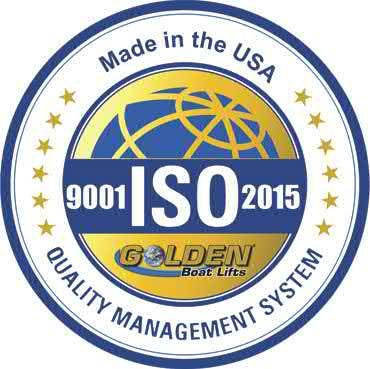
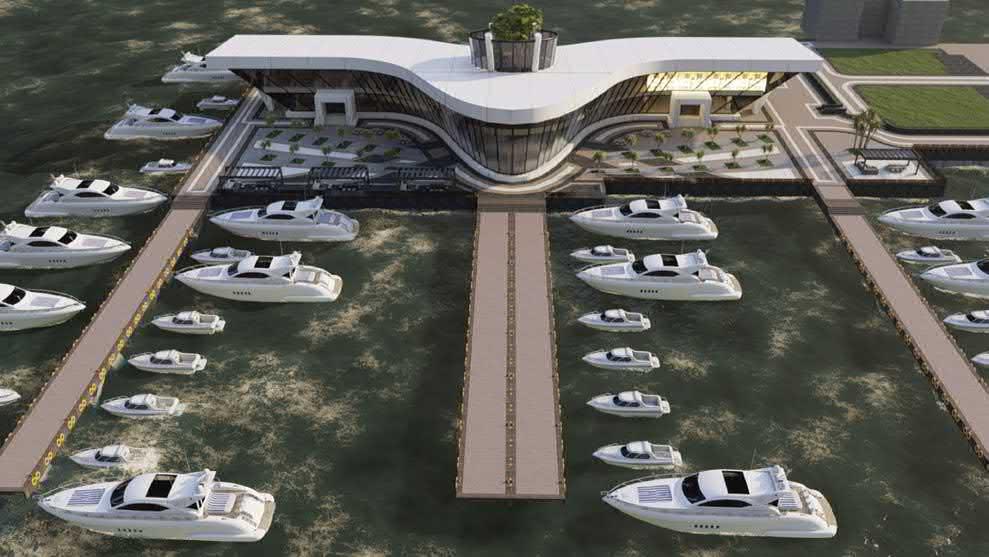
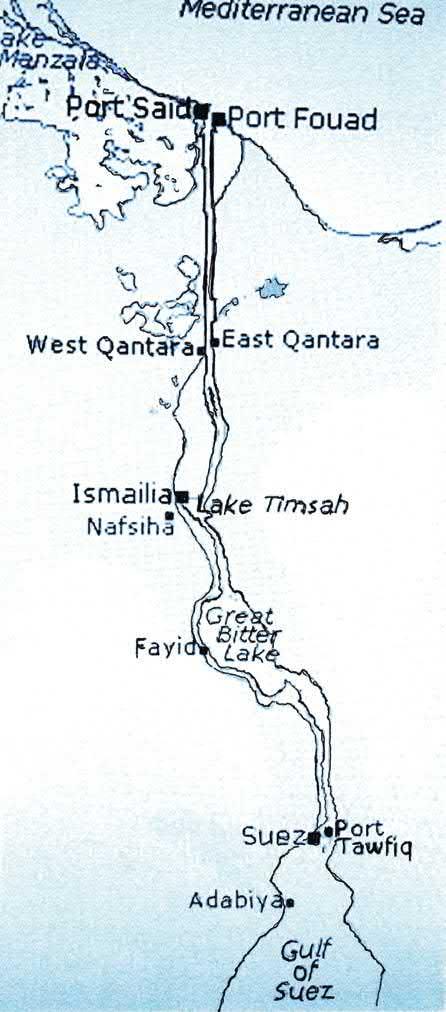
With its “Green Marina” project spanning 25,000m² (269,000ft²), complete with moorings, hotels and commercial areas, Ismailia Yacht Marina is set to play a significant role in the renewed Suez Canal. The project is one of the measures implemented by Egypt to reduce carbon emissions and promote the use of renewable and alternative energy sources, as part of the National Climate Strategy 2050. Donatella Zucca reports
Egypt is committed to developing integrated strategies for yachting and the environment, including the construction of marinas and suitable moorings along its coastline: approximately 995km (618mi) on the Mediterranean; 1,941km (1,206mi) on the Red Sea; and a good 72km (45mi) along the international waterway of the Suez Canal.


Since 2021, Egypt has been implementing a national regime aimed at increasing the efficiency of ports and marinas, and building new ones in areas considered important for tourism. The Suez Canal Authority (SCA) already uses innovative automated procedures for yachts entering and leaving the marinas located along the Canal, including Port Said, Port Ismailia and Port Tawfiq (Suez). There are plans for an 850m (2,790ft) tourist walkway, a 75-berth marina in Port Said, expansion of Ismailia’s marina from 12 to 65 berths, and the future Green Marina.
In 2022, Egypt launched its first online digital platform for yachting, allowing owners and yacht managers to send necessary data and documents to apply for entry, pay fixed fees on municipal berths, passenger terminals and tourist ports, and receive invoices in a timely manner.

The journey along the Suez Canal from Port Said to Port Tawfiq (Suez) offers breathtaking scenery, with the desert and Sinai peninsula on one side, and the lands of the Nile delta on the other. The Mediterranean and Red Seas, combined with Egypt’s extensive coastline and beautiful beaches, offer exciting development opportunities.
The Suez Green Canal strategy includes a commitment towards a green turnaround of the country’s sea and navigation, with the use of hybrid, solar and wind energy being prioritised, along with the creation of 16 traffic monitoring stations, and collection and recycling of the solid and liquid waste from ships in transit. Studies on new fuels and the smart use of new technologies are also underway.
This strategy, which started in 2018, has been highly praised by Georgios Plevrakis, vice president of global sustainability at American Bureau of Shipping (ABS), the IMO’s Marine Environment Division, and other large maritime organisations. Maersk International is set to support Egypt in its mega green energy development projects, launching 19 ‘eco’ ships between 2024 and 2025 that will lead to a reduction of 2 million tons of CO2 emissions. The first vessel is due to transit the canal this year.
In 2021, the Suez Canal helped reduce CO2 emissions by 31 million tons compared to alternative routes, and increased efficiency is also a focus. A second parallel canal is under
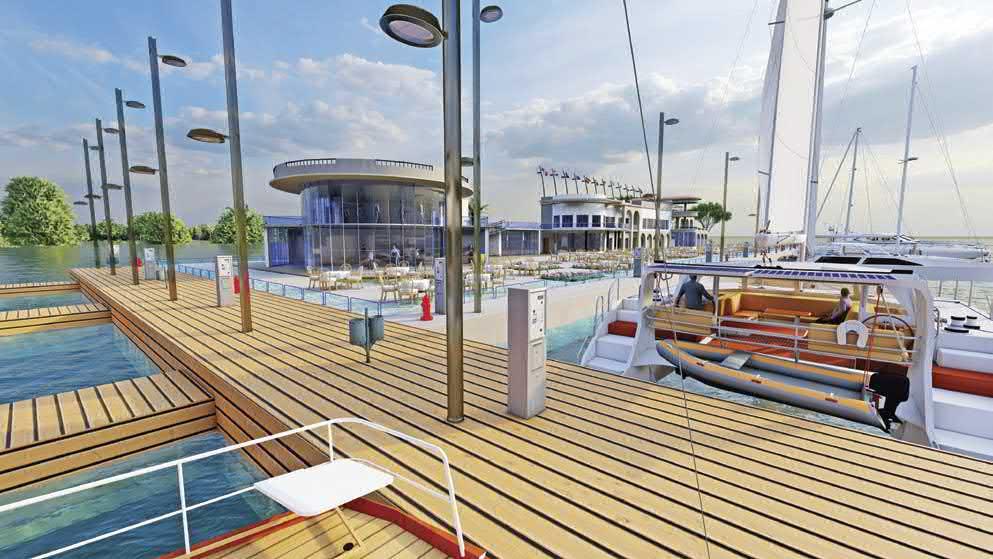
construction from markers km 60 to km 95, along with the deepening and widening of the ring roads of the Great Bitter and Ballah Lakes, to streamline traffic and double transits.
Ismailia Yacht Marina will be Egypt’s first green marina, and is the latest in a series of initiatives aimed at reducing carbon emissions, promoting the use of renewable energy sources, and using alternative energy forms such as green hydrogen. Currently serving as an overnight stopover for yachts in transit on the Canal, the Yacht Marina is undergoing upgrades to improve facilities and infrastructure, as a prelude to the creation of its Green Marina for superyachts. Located on the western shore of Lake Timsah, halfway along the Suez Canal and near the town of Ismailia, it is in a strategic position connecting with tourist destinations such as the Mediterranean and the Red Sea, including Hurghada and Sharm el Sheikh (450km/280mi away), Port Ghalib (600km/370mi away) and others.

According to the Suez Canal Authority (SCA) tourism team, Ismailia Yacht Marina is the first of three yacht reception centres affiliated with the SCA that are expected to be developed and transformed into world-class marinas. It is an important part of the overall development project, whose pillars are the digital transformation of most processes through a platform that allows online bookings, calculation of transit tolls for the canal, knowledge of mooring fees and tourist programmes.
The development strategy includes a range of services, such as an on-site petrol station, supply of drinking water and electricity, toilets, launderette, restaurant, maintenance, boat washing and wintering, as well as recreational amenities like a gym, spa, cafeterias, and free Wi-Fi connection. It is crucial to ensure that this marina becomes a onestop-shop for completing the necessary paperwork for vessels in transit. In fact, in the yacht transit process, it is and will be a mandatory stop, unlike Port Said and Port Tawfiq (Suez) where it is optional, and where work for the respective yacht clubs will soon begin.
Construction of the Green Marina superyacht marina, which will use only renewable and alternative forms of energy, including green hydrogen, is underway and should be ready within the next two years. It is an important piece of the puzzle to attract international players and will bring tourists closer to the various cultural facets of the Mediterranean and the Red Sea.
Since 2019, Red Sea Week has been the world’s number one yacht event for high-net-worth individuals. In Port Said and Port Tawfiq, European companies
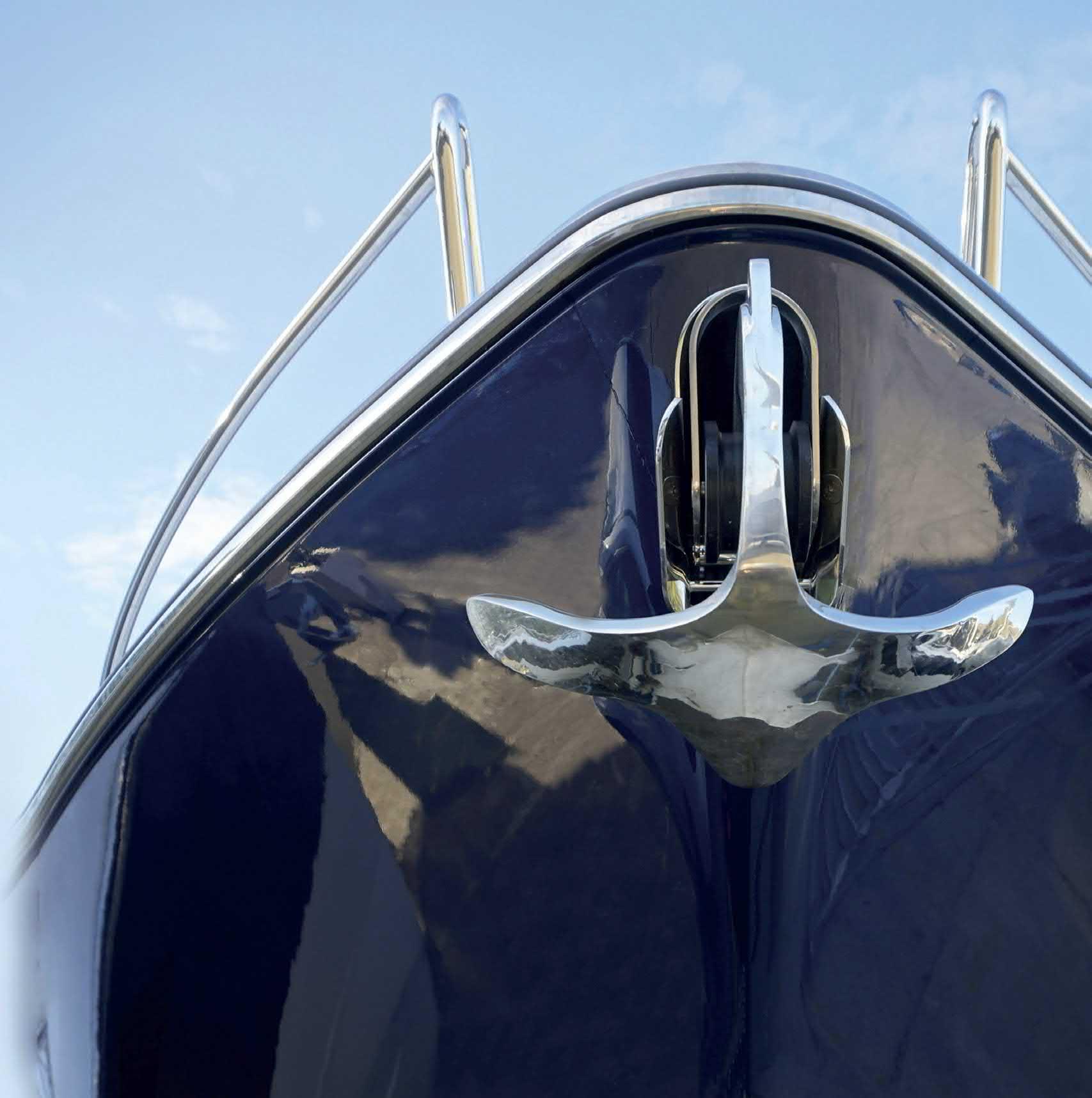

are building infrastructure and have offices and products such as travel lifts, floating or fixed pontoons, cranes, and more.
The Egypt-based service agency of BWA Yachting is strategically positioned to assist vessels transiting the canal. Did the company choose the Suez Canal because of its planned developments or because of the number of its customers that cruise through?
“BWA Yachting has been assisting loyal customers in Egypt and through the Suez Canal via trusted sub-agents, for more than a decade. Like Gibraltar, Egypt is a gateway to the Med, and the Suez Canal is the shortest and safest route between the Mediterranean and the Red Sea,” explained BWA Yachting chief operating officer Nikolaos Patsiokas. “Over the last five years, we have experienced a steady increase in the frequency of the requests and crossing operations. A clear pattern is emerging in the greater region and it is in our DNA to anticipate the needs of our customers at all levels and act accordingly.”
This growth will further increase when Port Said and Port Tawfiq offer the same basic characteristics as Ismailia, in terms of boat and guest reception and eco-friendly approach. “Egypt’s vision to boost yachting in this region is in line with the directives of Egypt’s President El Sisi to promote yachting tourism,” noted Mahmoud El Kady, managing partner BWA Yachting Egypt.
“Egypt wants to position itself as an emerging magnet for nautical tourism on a global scale. The Mediterranean
is a hot spot for this sector and we have tourist places near historical and touristic cities, and prime and popular diving spots for marine sports. Egypt is also particularly popular with our friends in the GCC (Arabian Gulf) and yachting provides a great window to double the number of those visiting the Red Sea. It should also be noted that Egypt is giving considerable attention to promoting maritime tourism through offering incentives to vessels that stop at an Egyptian port, including the canal yacht reception centres of Port Said, Ismailia and Suez.”
And there is more to come. BWA has signed a partnership with Kadmar, the main port agent for the Suez Canal and a platform for yachting, offshore marine, brokerage, travel services and much more throughout Egypt and elsewhere. El Kady explained that via this partnership, the team is able to take the administrative burden away from captains and management companies by offering the following services: Suez Canal transit, bunkering, fresh provision and supplies, husbandry services,
There are currently limited mooring options in Ismailia. The Green Marina will greatly enhance its destination appeal.
spare parts delivery, port and marina arrangements, anti-piracy security services, parcel and courier services and tourism arrangements.
Also, as a reflection of the demands of a growing business, BWA Yachting has announced the official opening of new offices in Egypt. From the head office in Alexandria and branches in Cairo, Port Said, Damietta, Suez, Sokhna and Safaga on the Red Sea, the agency operations can cover over 13 ports and marinas across the Red Sea and Mediterranean coastline, including Alamein, Marassi, Sharm El Sheikh, Hurgada, Gouna, Marsa, Alam and others.
With the online platform aimed at facilitating transit via the canal recently launched and subject to continuous improvement, and agencies such as BWA working round the clock to assist with yacht transit, is the canal a destination or just functional?
“Small yachts normally need to fuel up at Port Said or Suez before heading to the Arabian Gulf or the Maldives, etc,” El Kady confirmed. “Some yachts stay at their yachting destinations in Egypt, such as Marassi Marina, located by the amazing North Egyptian coast, and others prefer Sharm El Sheikh, known to be the best for diving activities.”
And what are the most requested services by customers crossing the Canal and heading into the marinas?
“In this order: transiting the Suez Canal – 193km (120mi) and a duration of 12-16 hrs – fuel supply, provisions and security services.”



The Marina Arcipelago Toscano di Piombino project is a courageous Italian initiative co-financed by the Regional Programme Fund for Underdeveloped Areas 2007/2013 and supported by the Tuscany Region. Its aim is to help transform an abandoned area into an eco-friendly nautical reception centre. Donatella Zucca reports
Barring unforeseen difficulties, Marina Arcipelago Toscano is set to open in Piombino by 2024 as a large marina proposed by the Tuscany Marine Consortium and the Porto della Chiusa project. It has been signed off by the Piombino Municipality, Northern Tyrrhenian System Authority and La Chiusa di Pontedoro. This sociallyfocused cooperative is dedicated to the construction and management of ports, marinas and tourist ports.
The project encompasses 20ha (49 acres) of water and 23ha (56.8 acres) of land, including spaces for fishing and fishermen, areas for marine environment studies, water sports and local leisure. The concessionaire, promoter and operator is La Chiusa Pontedoro cooperative.
The Marina Arcipelago Toscano project plays a pivotal role in the development of Piombino, providing spaces for shipyards, a dry port, sports
logistics, infrastructure and nautical tourism services. It also includes a breakwater built from natural boulders, a large pier made of sheet piles and a series of floating pontoons and fingers.
The latter have been designed by Ingemar, winner of an international tender for the design, construction and installation of all floating structures.
A Temporary Business Association, headed by Modimar SpA, is supervising
CGI of Marina Arcipelago Toscano di Piombino. Below: Ingemar pontoons have already been installed.
the design and construction, while the dredging and sea works are being carried out by Sales SpA.
The marina can accommodate 656 boats of 8 to 20m (26 to 66ft) in length, moored at large pontoons anchored by poles driven into the seabed and served by fingers of various lengths. The sea part of the project is at an advanced stage of construction, with the dredging works, protective piers and backbone pier already completed. The piers and fingers for the first section are being installed on the east side of the port, and moorings should be complete in spring 2023. Further dredging will be required for the second section, with the piers scheduled to be completed by the end of 2023 and early 2024.
The floating structures are made of reinforced heavy-duty aluminium alloy, with concrete floats and exotic timber decking. The site also includes 47 berths for local professional fishermen, ten for non-local transit and 20 for the shipbuilding area, which covers about 9ha (22 acres). There are 100 berths for very small boats and 94 berths for sports, environmental, cultural and charter activities. Beautiful facilities for services and nautical tourism are currently being developed.
The major hurdle for Marina Arcipelago is its proximity to a new gas pipeline. A huge Floating Storage Regasification Unit (FSRU) ship is to be located in the port of Piombino, almost 1km (0.6mi) away, with a pipeline running 66m (217ft) from the dam and more than 7m (23ft) under the seabed, as confirmed by La Chiusa president Lio Bastianini.

Despite the nearby nature reserves and future aims to make the area even more eco-oriented, no eco-impact study has been conducted for pressing national reasons. The regasification planners and managers give assurance that there is no need to fear the pipeline, chlorine discharge into the sea, a drop in water temperature, or accidents. The mayor has appealed the plan to the Regional Administrative Court, but with no success due to force majeure.








































by Fabien Loy, Buro Happold
The process of creating a marina can be complex, and a wide range of parameters should be considered to make it fit into its local “habitat”. In developed countries with mature boating markets, most marina projects represent upgrades or extension works, while in regions like the Middle East, opportunities for greenfield projects are more common and lend themselves to becoming new visitor hubs and attraction centres.
The team at Buro Happold is well versed in the planning of waterfront developments, and has a strong portfolio of iconic international marina projects, including Hayle Harbour, Folkestone Harbour and Red Sea mega projects. Our strengths lie in the understanding of architect visions and client expectations, with the integration of technical experts at the early stages of the design (planning, infrastructure, environment, coastal engineering, mobility, advisory services and sustainability).
Working closely with our dedicated planning team has been an eye opener in terms of the benefits of using planning tools and benchmarks to support marina planning on land and in water. This different approach to the more traditional supply and demand assessment can unlock feasibility studies and help kick start the conversation with clients and stakeholders rapidly.
The innovative approach we have developed as part of Middle East marina development projects is the concept of typology. While some consultants consider the siting of the marina (e.g. island, inland, exposed coastline, sheltered area), or the size of the marina, for instance small (<60 berths); medium (>60 and <260 berths); and large (>260 berths) as their key parameter, we focus on the marina strategy and its future upland use, guided by property and investment advisors.
From a large number of successful marinas worldwide, we defined six categories of marina typology as presented in the tables (right). Each typology is represented by four to ten benchmarks matching the criteria set per typology in terms of key land use, activities proposed, marine facilities and
existing berth mix. The selection process is being refined, and new benchmarks are constantly added to enhance our model based on discussions with operators and advisors.
Key indicator values have been extracted from the benchmarks to generate planning guidelines, as shown in the table (p.27) where average values are adopted. Hillary’s Yacht Club is illustrated as a city hub example. Starting from given project
boundaries (water and land areas) and a typology selected by the client based on upland aspirations, the number of berths and landslide zoning allocations can then be determined using our defined ratio and percentages.
Space is a key challenge as part of most planning exercises, to support the financial performance of a project and also to allow for sufficient circulation areas and suitable access. This is particularly true of brownfield projects where opportunities to increase site boundaries are usually limited. Trends for larger yachts and the need for better facilities and amenities lead to space constraints in areas which are often of high property value. Several opportunities can be considered as follows:
• Turning parking into a multi-storey car park or introducing an underground car park
• Incorporating a drystack to increase the total number of boats (provided sufficient land area is available)
• Smart mooring systems, such as
Typologies Residential City Hub Luxury

Definition Moorings linked to property, either directly or through rights. Increases overall value of real estate.
Examples Port Grimaud (FRA), Sanctuary Cove (AUS), Miami, Florida (US), Nakheel Marinas (UAE)

Focal point for city or town. Becomes anchor for Food & Beverage outlets, hospitality services.
Portofino (ITA), Dubai Marina (UAE), Hillary’s Yacht Club (AUS), Port de Cannes (FRA)

Internationally known destination for superyachts. Becomes hub for wider luxury offering and exclusive clubs.
Port Hercule (MON), Bulgari Resort (UAE), Yas Marina (UAE), Port de Saint Tropez (FRA)
Typologies Commercial Light Deployment Resort


Definition Linked to businesses such as tour boats, water sports, ferries or fishing harbours. Catalyst for economic activity. For sheltered destinations or large developments attracting seasonal visitors. Simplified layouts with cost efficient installation.
Examples Al Seef (UAE), Salthouse Docks (UK), Brighton (UK),
White Bay 6 Marine Park (AUS), Corfu Town Yacht Harbour (GRE), Port Washington Yacht Club (US)

Elevates real estate by providing opportunity for boat usage with property. Offers wide range of beach activities and water sports to visitors.
Abu Tig (EGY), Sunset Beach Resort (KSA), Porto Carras Grand Resort (GRE). Jebel Ali Resort (UAE)
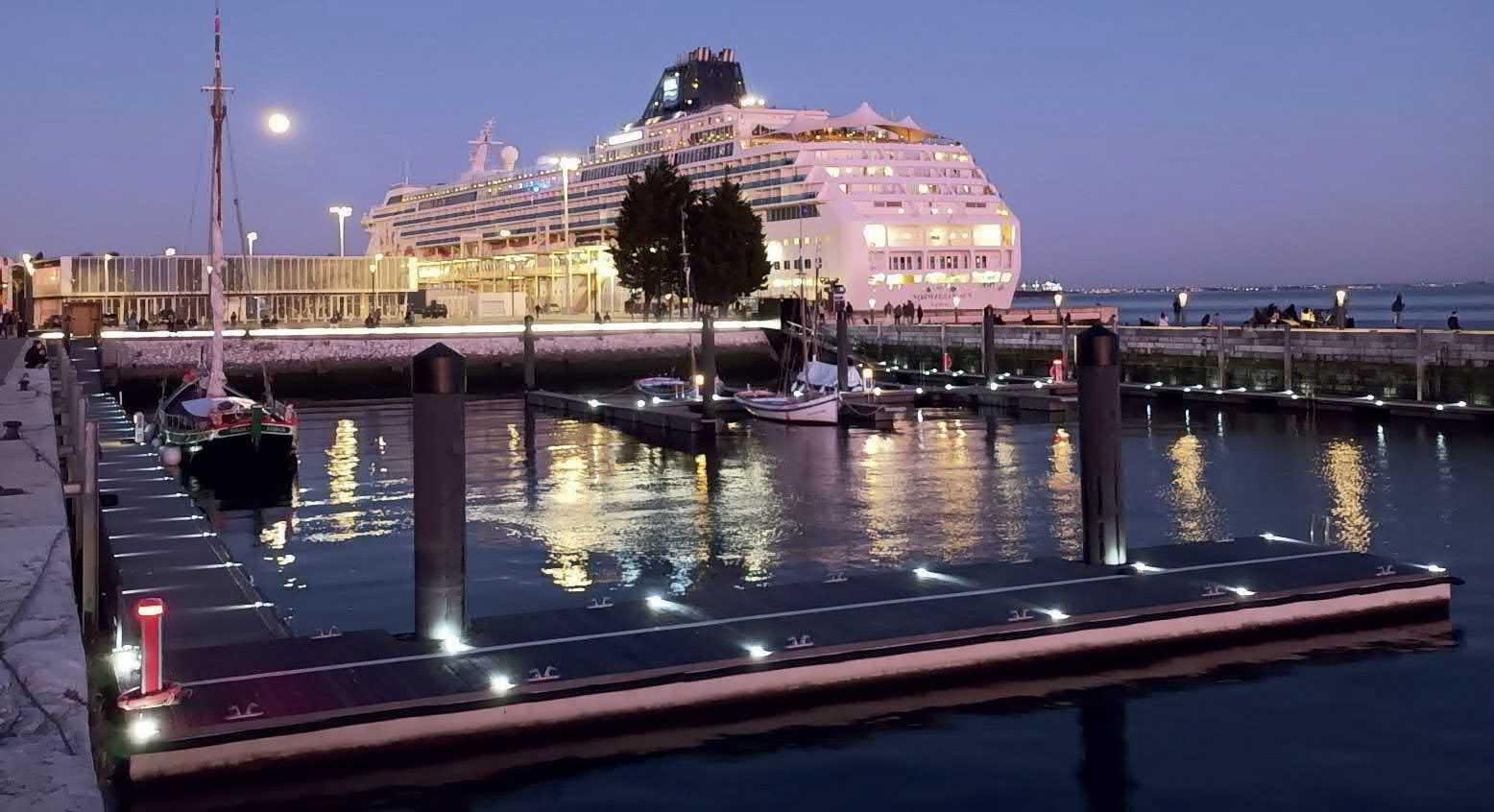

Develops innovative solutions designed to satisfy the customer with care and reliability
The smart system has been created to support marinas in managing the services and add value to the port structure and berths. Our multi-platform solution is able to remotely control from PC and Smartphone the columns, making the systems integrated.
DISCOVER the future with



Cascais, PORTUGAL
+351 214 692 024
Barcelona, SPAIN +34 933 601 101
Rio de Janeiro, BRAZIL
Vigo, SPAIN +34 986 906 770

+55 21 3942 8828




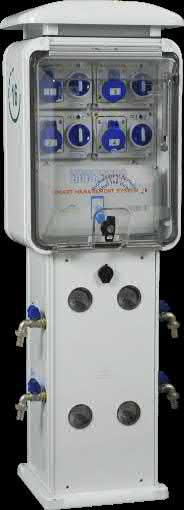

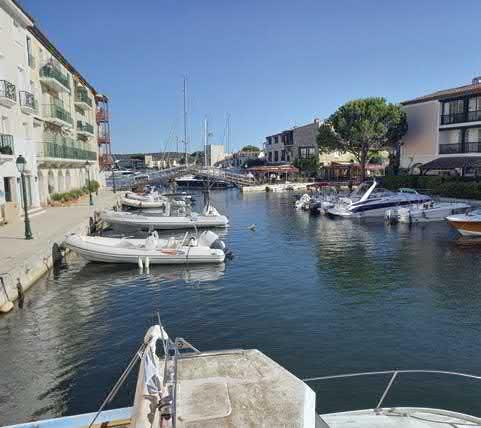
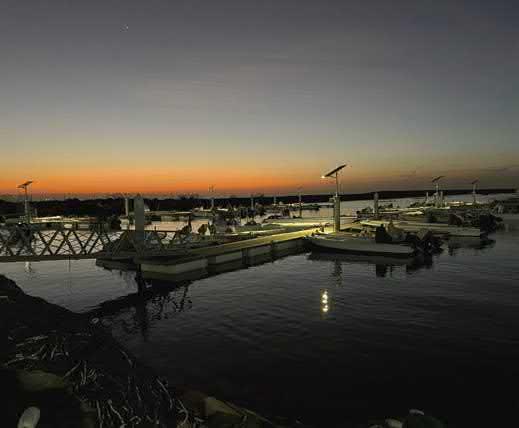
Poralu’s Mobi-Deck grid system, an innovative mooring management system
• Placing some of the facilities and assets on piled structures or floating platforms (when water area is available)
The drystack option nowadays appears more and more frequently in projects, to reduce the size of the marina basin and offer more economical rates to users. Various solutions are available and new innovative concepts, such as Blue Ring and Automated Storage and
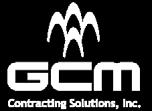
Retrieval (ASAR) systems, are being tested and implemented across the globe to help meet growing demands. When brainstorming with a client, we started imagining a concept of a multipurpose drystack, where part would be for boats and part for cars as an integrated solution for users.
Using our planning tool, with defined site boundaries and selection of typologies, we can rapidly start drawing the berthing area and the upland development. This tool is also being customised with
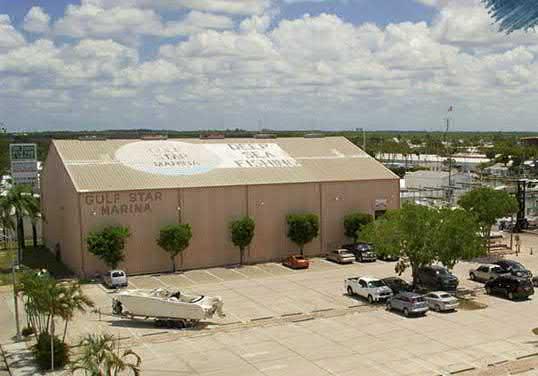
other parties to assist in the generation of high-level cost estimates whereby, following the same process, project boundaries combined with a set typology can suffice to establish initial capital and operational costs as an order of magnitude. This model can therefore guide clients as part of feasibility studies by fast tracking the ‘optioneering’ process and testing different concepts. Design guidelines (such as PIANC, Australian Standards and The Yacht Harbour Association Code) are key to validating the geometry of the berthing



Via Alba-Narzole 19, 12055 - Diano d’Alba (CN) tel. +39 (0)173 500357 – info@boatlift.it
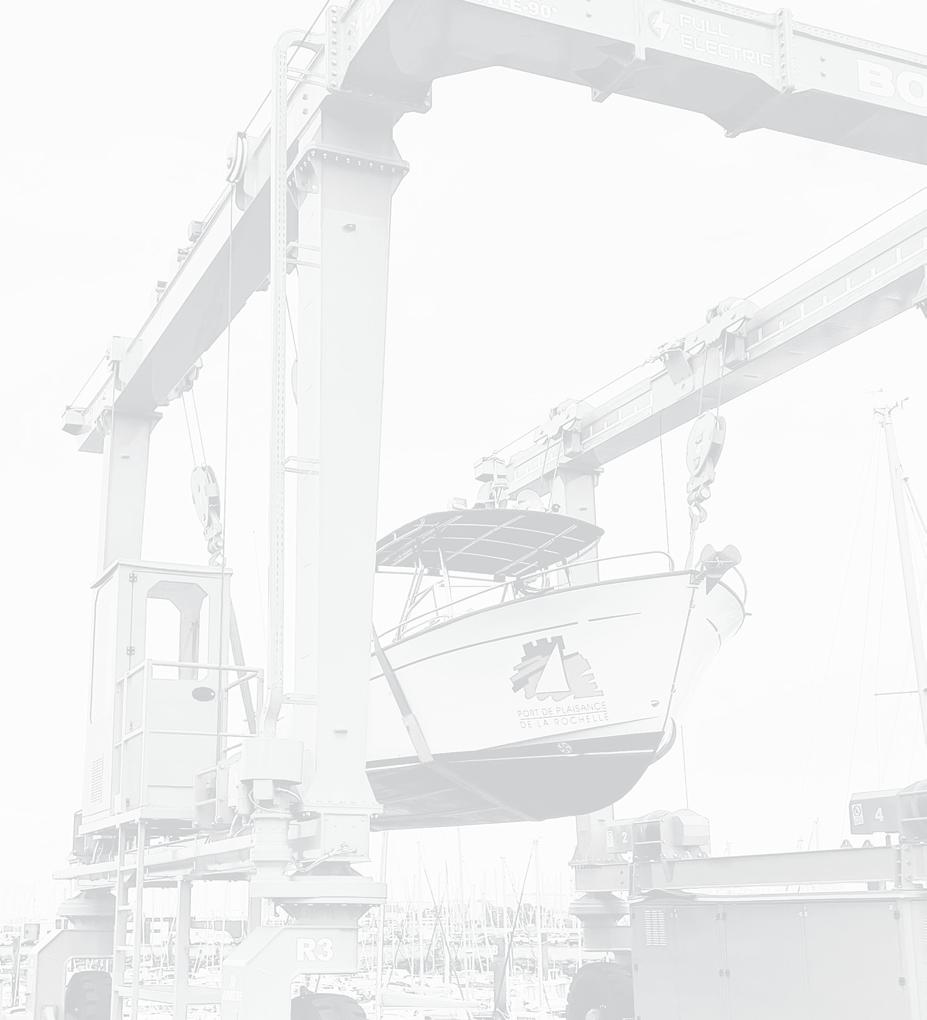
FULL ELECTRIC RANGE NOW AVAILABLE
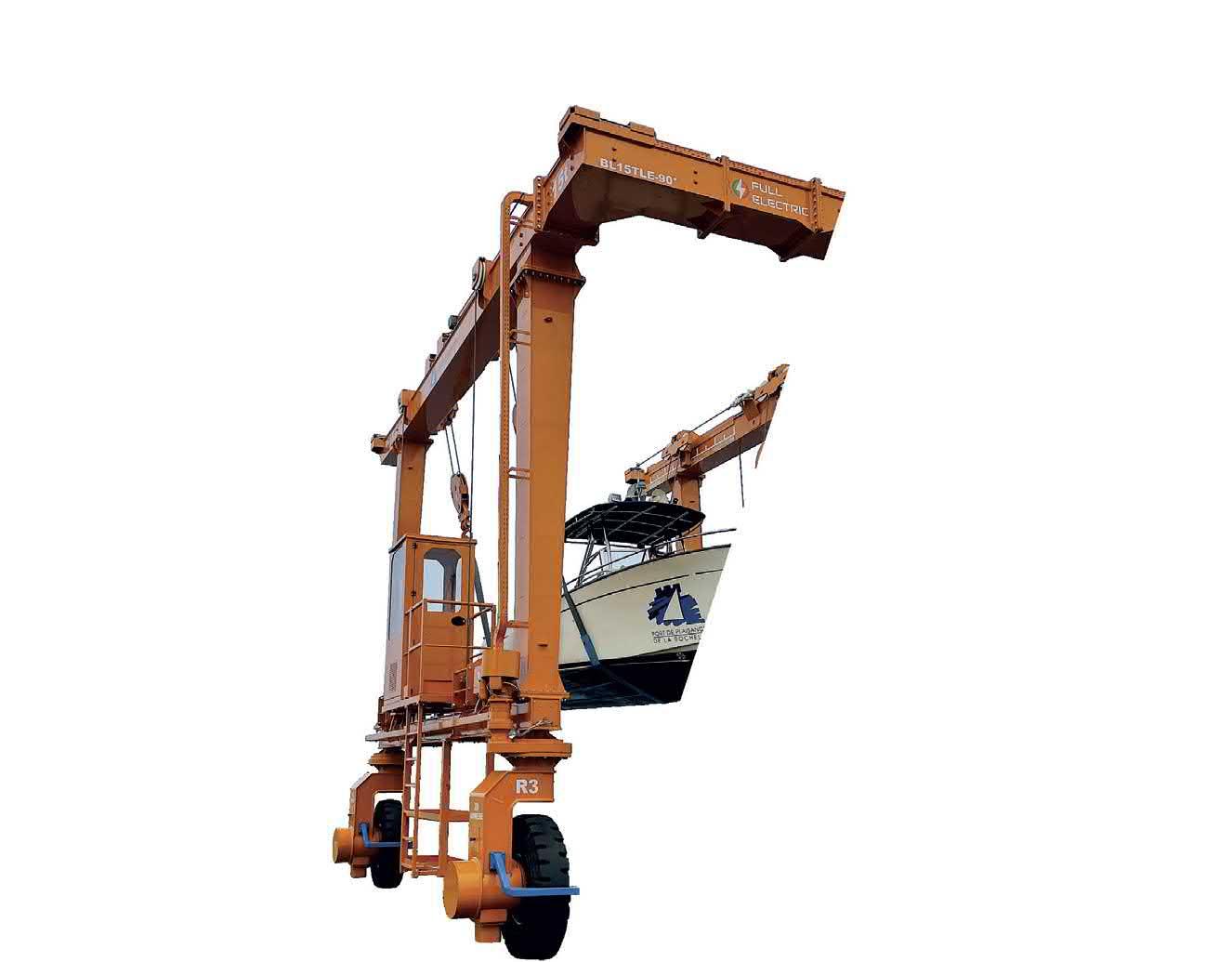

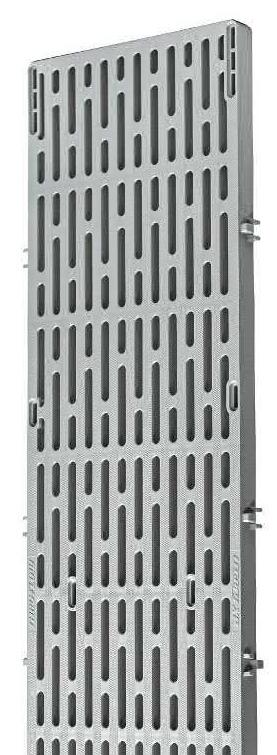
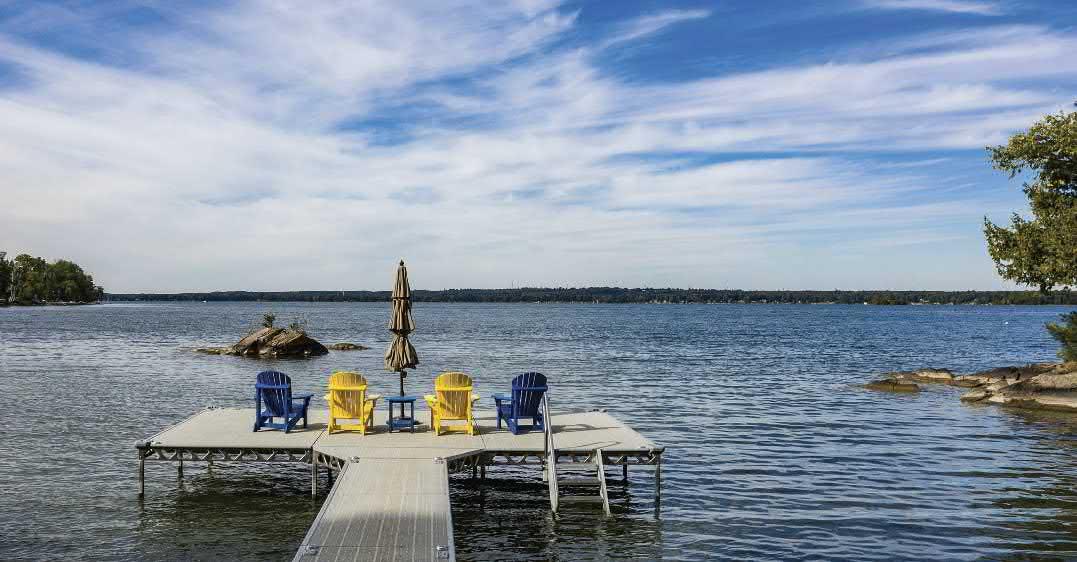
Key indicator values are extracted from the benchmarks to generate planning guidelines. Values can be subject to interpretation for landside boundaries and constant evolution of upland development.
area once a marina option is taken forward.
Refined market analysis related to boating activities (with supply and demand assessment) and detailed property market studies still represent great tools to support clients further in their decision process and financial appraisal. This innovative methodology is seen as a different way to approach the challenge from a blank canvas where land and water combine from the start.
Fabien Loy, associate engineer at Buro Happold, is based in the Dubai office.
E: fabien.loy@burohappold.com


Since 1963 Walcon has proven itself to be a worldwide leader in the design, construction and installation of marinas and berthing facilities, with renowned


“Ocean
MEET OUR FULL-ELECTRIC SERIES 0 EMISSIONS. 0 LEAKS.

GH70e, OUR FIRST 65T ELECTRIC GANTRY CRANE, LOCATED IN THE PORT OF BERMEO (SPAIN).
- Easy recharging and guaranteed autonomy for a full working day, thanks to the high-performance lithium-ion battery core with a 10-year guarantee
- Incorporation of an autonomous solar panel support system, which provides up to 20% of the daily energy used.
- Optimization of the docking area thanks to the variable span, allowing to adjust the boat hoist to the beams of the different boats. Want to learn more about the GH70e s top features? Don´t miss the video!

motion@ghcranes.com www.motion.ghcranes.com
The Guest Comment article ‘Marinas and takeovers – enough room for boating?’ published in November/December 2022 (Issue No. 134), while in no way dismissing the very important industry role of large marina groups, made a strong case for the simpler, less luxury-based marina offering that is more likely to be found at a family-run marina.
The ‘no frills’ approach is a far cry from zero-amenity; the service is very personal and professional; and, as the owners expect future generations to directly benefit from investment in the property, a more flexible approach can be taken when undertaking projects as they do not necessarily require a swift return.
Marina owners and their customers give us interesting feedback:
Jean-Michel Gaigné CMM, InXs Marinas, France:
I fully understand the author’s testimony. There is a race in the marina industry towards ultimate luxury and services that seems never ending. Marina offers must be targeted to different types of customers, and those who have less money and fewer expectations must not be forgotten.
Boating must remain accessible and affordable for everybody, and there are boaters who don’t need a fitness centre or a concierge service, but just a sheltered berth, freshwater and electricity. That’s why the certifications and the accolades delivered to the marinas are very useful. A 3-Gold Anchor marina will probably satisfy certain customers, while wealthy yacht owners may look to premium and fully integrated service.
In France, most of the marinas just deliver essential services – even sometimes basic. It doesn’t mean that the berth holder cannot find supplementary benefits to enrich his experience, but these services must be paid in addition and often provided by third parties. It is the role of the marina operator to link between the local ecosystem and the boater’s expectations since there is always a swimming pool, gourmet restaurant, tennis court or a golf course in the surroundings to address the desires of every berth holder.
Wade Eldean CMM, Eldean Shipyard & Marina, MI, USA:
I enjoyed your editorial on marinas and takeovers as we are one of the Mom and Pops that are still around. I put the article on our Facebook page and got some comments:
Dan D:
I get worried every time local is replaced by a ‘conglomeration’. I like knowing the owner and manager of the business I support. I like seeing an owner take pride in their business. I prefer local family businesses when possible. [But] I have experienced multigenerational businesses that should have sold as it became apparent that the new generation didn’t appreciate the customer.
I also like the extra perks of a wellrun marina, pool, nice clean bathrooms, safe docks. I also need a place where I can ‘tinker’ on my boat. I take great pride in keeping my boat ship shape. I will also need help from time to time when I just don’t have the time or expertise to do the project.
Debra B:
As new boaters back in 2019, a family owned marina like Eldeans was welcoming to us as a small, much older boat owner; while at the same time observing the variety of huge boats and sailboats docked amongst us in the same dock slips. You can tell Eldeans values all its customers no matter the sailing vessel size or age, and works to make every slip renter feel welcome. Family owned is the preferred marina experience.
Michael S (MS) and Wade Eldean (WE):
MS: I support local wherever/whenever possible. Rarely does bigger = better. The biggest challenges for many smaller/independent marina operators are capital investments required to stay relevant (not necessarily to become
like 6 flags… but, to keep things like docks and facilities looking nice and in good repair requires some business discipline to budget sufficient funds) and transitioning of the business from one generation to the next. The latter is a common issue for any business going through generational change but, in the case of marinas, anything decent that comes to market will be gobbled up – a good solution for family not interested in continuing the business but not necessarily for the local boating community.
WE: Lots of good points. Another issue the marine industry faces is enough marine techs. And relatedly, besides having customers that shop local, I’m hoping that techs/employees might shop local too and prefer our type of employer over a big corporation! It is really discouraging when one of the big guys buys a marina nearby, fires a bunch of the people that came with the marina, and then begins poaching employees from the other marinas around them. It is one of the things that makes boating harder these days, not easier. But there is some good movement lately to get more people interested and educated in working in the marine business. You and I know there’s no better place to be.
Jason B (JB) and Wade Eldean (WE): JB: I will always prefer a locally owned, local business. I prefer to have a boat that might have some projects because I actually enjoy the projects. It is part of what boating is to me…value comes in what you put into things in life. I like a marina that succeeds because it does the same in the service it provides its customers. I stay at one that I perceive does value its customers. I highly doubt that the same value would be conveyed at a larger conglomerate that owned hundreds of properties around the country (world). It becomes personalised and/or forced “corporate engagement”.
WE: I agree with you. As an owner, it’s hard to put into words the amount of work an owner/manager can do, or is able to observe the work that the marina has done for our boaters, when living on the property, and being around 24/7.
If you missed the November/December Guest Comment, you can read it online at www.library.marinaworld.co.uk - 2022 - November/December - page 48.


Melanie Symes speaks to representatives from five family-owned marinas within the TransEurope Marinas network to gain insight into how they survive and thrive.
When TransEurope Marinas was first created, as Transmanche Marinas, the aim was to support smaller and often family-owned marinas, creating a home-from-home network to facilitate cruising to new destinations.
As the association has grown, this group of family-owned marinas, each with a highly motivated second or even third generation at the helm, remains amongst the most emblematic; engaging actively with other managers and the industry community, and keen to share the benefits of their accumulative experience. Perhaps not surprisingly, each marina flies the Blue Flag and most have held the award for over 25 years.
As we embrace the moral and civic imperative to include good governance, social, environmental and climate considerations as pillars of future resilience and sustainability, multi-generational marinas, with their inherently long-term perspective, have some particularly sage advice.
Family representatives from Jachthaven Wetterwille (Loosdrecht, Netherlands), Marina del Cavallino (Venice, Italy), Puerto Calero (Lanzarote, Spain), Jachthaven Waterland, (Monnickendam, Netherlands), and VY Nieuwpoort (Belgium) share their thoughts.
Q: What does a family-run marina destination mean to you, compared perhaps with more commercially run marinas? Is there a stronger company purpose and company culture, for example?
CK: As a family-run marina, we have a more personal approach than most commercially run marinas. We know the names of almost all of our 350 berth holders by heart and are on a firstname basis with many of them. Some customers have had a berth in the marina for decades and have known me since I was a child. Older berth holders often come into the office with stories about my father and grandfather from the good old days. This adds a specific sort of charm.
Roberto Perocchio (RP) (Marina del Cavallino), is very well-known figure in the industry, having held successful leadership roles in his national federation and ICOMIA, amongst other positions. Marina del Cavallino, situated on private land, has been in his family since 1971. “My family prepared me as a second-generation representative with a degree in law, inviting me to


Roberto Perocchio and his wife Dr Michela Caroli attend all the relevant sector-related congresses from an early age to help me understand the rules and trends of our business environment,” he says.

As a family business, we also adhere to a different management style. Issues with staff or customers are met head-on and discussed openly, without the intermediaries you might find in commercial companies. Although we are a small family business, we do strive for the highest standards of service and continue to improve our facilities. We believe that a personal approach and a high level of professionalism can go hand in hand.
Nienke Zetzema (NZ) (Jachthaven Waterland) Nienke is TransEurope’s regional representative for the Netherlands. She co-owns the two-site marina with her husband after taking over


and
from her parents, who bought the marina in 2002. This followed the success of her mother, Trees Zetzema’s, charter company, founded in 1985, which had become a prosperous business with a fleet of over 18 yachts. At university at the time of the marina purchase, Nienke then spent ten years as a management consultant before stepping into the role.
RP: The family atmosphere of the marina helps foment customer loyalty in our guests, who are mainly residential, and who have become family friends over the years. This long-term relationship led us to find a good balance between the needs of the company (surviving the terrible crisis we suffered for many years due to a combination of the global financial crisis and the luxury taxation on boats) and the needs of the customers, who on average have become less wealthy than in the past.
Being a family-run marina destination means having a more direct relationship with the customer, who desires a round-the-clock and personalised service; a business environment where you have to be customer-oriented, with a strong daily commitment to improving your marina, because it’s not only a business but your home and life.
On the other hand, the customers feel that they are in a well-kept paradise, a miracle connecting sea and land, and they count on the owners to protect and maintain the precious site in which they, too, as customers have also invested.
JJC: I feel that there is a sense of personal commitment and passion in the company, affecting customers, employees and service-providers that you perhaps don’t see in more commercially run enterprises. Not, perhaps, subject to the same market pressure, I recognise that we have made significant investments with a very long-term perspective, anticipating emerging trends. Since these projects don’t provide an immediate return, they
Jachthaven Wetterwille in the Netherlands is expertly run by Mieke Vleugels with the day-to-day assistance of her daughter Catherine Kosters.
might not be considered as attractive or viable under other circumstances.
My parents invested a huge effort in building personal relationships, and as the second generation, there’s a great sense of continuity since many customers that continue to visit the marina first arrived to be greeted by my father. This longevity is clearly appreciated and the level of trust generated over the decades is also a benefit when it comes to working with the local authorities on new projects. NZ: For me it means focusing on the long term. We have employees who have been working for us for over 15 years, charter clients with us since the beginning and berth holders who basically grew up here at the harbour. We want to offer a full service to our clients, with a focus on customer satisfaction. Being a new business also inspired us to engage in topical innovations, such as our work with electric sloops 20 years ago. Unfortunately, the batteries of 2002 are not the same as those available in 2022 and the start-up was very problematic.
We are also very keen on seeking collaboration with other companies, such as the Dutch Charter Association. We are also one of the founders of the IJsselmeerhavens network, which promotes boating between member harbours. We received our ninth Green Pennant this season, together with the Blue Flag as a reward for our corporate responsibility.


MD: People are very happy with a warm welcome and a friendly atmosphere; they want to feel at home in their marina or yacht club. I think this is the most important difference between the two.
Q: How does the family working dynamic enrich the overall quality of services offered at the marina? What do you bring to the table as separate individuals with different life experiences? How do you manage internal conflicts?
CK: The fact that we have different generations working at our marina gives us a great advantage, in my opinion. My mother brings her vast experience and know-how to the table, while I try to bring a level of digital innovation to the marina. We both have different, yet complementary visions for the company.
Whilst my mother has the final say in everything that goes on in the marina and oversees structural improvements including the gradual refurbishment and replacement of our pontoons, I manage our website, social media and newsletter, as well as our digital booking systems and applications. We are in constant debate about possible improvements but face any conflicts head-on. These situations sometimes lead to heated discussions – as in any family – but, more often than not, to good solutions.
RP: As an individual owning a marina, I try to ignite passion and long-term commitment in the business, acting not only inside the marina, but in national and international marina owners’
organisations, to exchange best ideas and practices, lower taxes and concession fees when possible; making pleasure boating more accessible via better regulations. In a family-run business the only big threat can be internal conflicts, but if decisions are carefully and deeply discussed among family members, good sense prevails. We are now working on our third generation; involving the children so as to garner their interest and passion for the company and have a vision for its future opportunities of modification and growth.
JJC: Rather than a change in leadership, I think this is more a question of an evolution. We share my father’s values and vision, and so our final choices are aligned. I gratefully acknowledge and appreciate the level of trust and commitment our parents invested in us, allowing us to make crucial decisions independently and, in consequence, gain key understanding quickly.
NZ: My parents were the entrepreneurs who started the charter company and bought the harbour. They saw the opportunities that made our company flourish. My husband’s and my roles focus more on specific segments and ensuring that it all contributes to the whole picture. In terms of responsibilities, I run operations with my team of 17 staff, and my husband Kees does strategy, acquisitions and contracts.
Being a family and focusing on the long term we can make decisions quite rapidly. The environment we work in is
The management of VY Nieuwpoort in Belgium passes from father to son as Steven Desloovere retires this year leaving Maarten fully at the helm.
dynamic, just like sailing. Each day is new, and each client is different – but inherently with the same end goal – to be able to go out and enjoy boating. Our job then is to try and make that happen.
When we have internal conflicts, I want to solve them asap. The business we are in is dynamic and if we don’t talk about it or avoid it, it will implode. But this is the style my family practices:
Mieke Vleugels and Catherine Kosters (CK) (Jachthaven Wetterwille): With a minimal background in the nautical field, Mieke took over the family marina, (owned since 1960 but established over a century ago in 1912), and boatbuilding company


Catherine Kosters (left) and Mieke Vleugels.
first owned by her father-in-law, after the untimely passing of her husband. Despite her lack of experience, she made the marina flourish through a combination of hard work and pioneering spirit, selling the on-site Dutch sloop business and investing in many innovations in the marina, such as a heated hangar with drystack system, the first in the region, and visitor accommodation including a green roof with room for tents. A firm believer in the power of global cooperation, she is part of various associations, is a highly regarded assessor for the prestigious Gold Anchor Scheme and is consequently one of the most inspirational female role models in this sector. Her daughter Catherine, the eldest of three, combines her job as a freelance journalist with a position at the marina, where she assists her mother in the day-to-day management.
Electric Service Pedestals
Electric Vehicle Charging Units
Electric Boat Charging
Electric & Water Management Systems

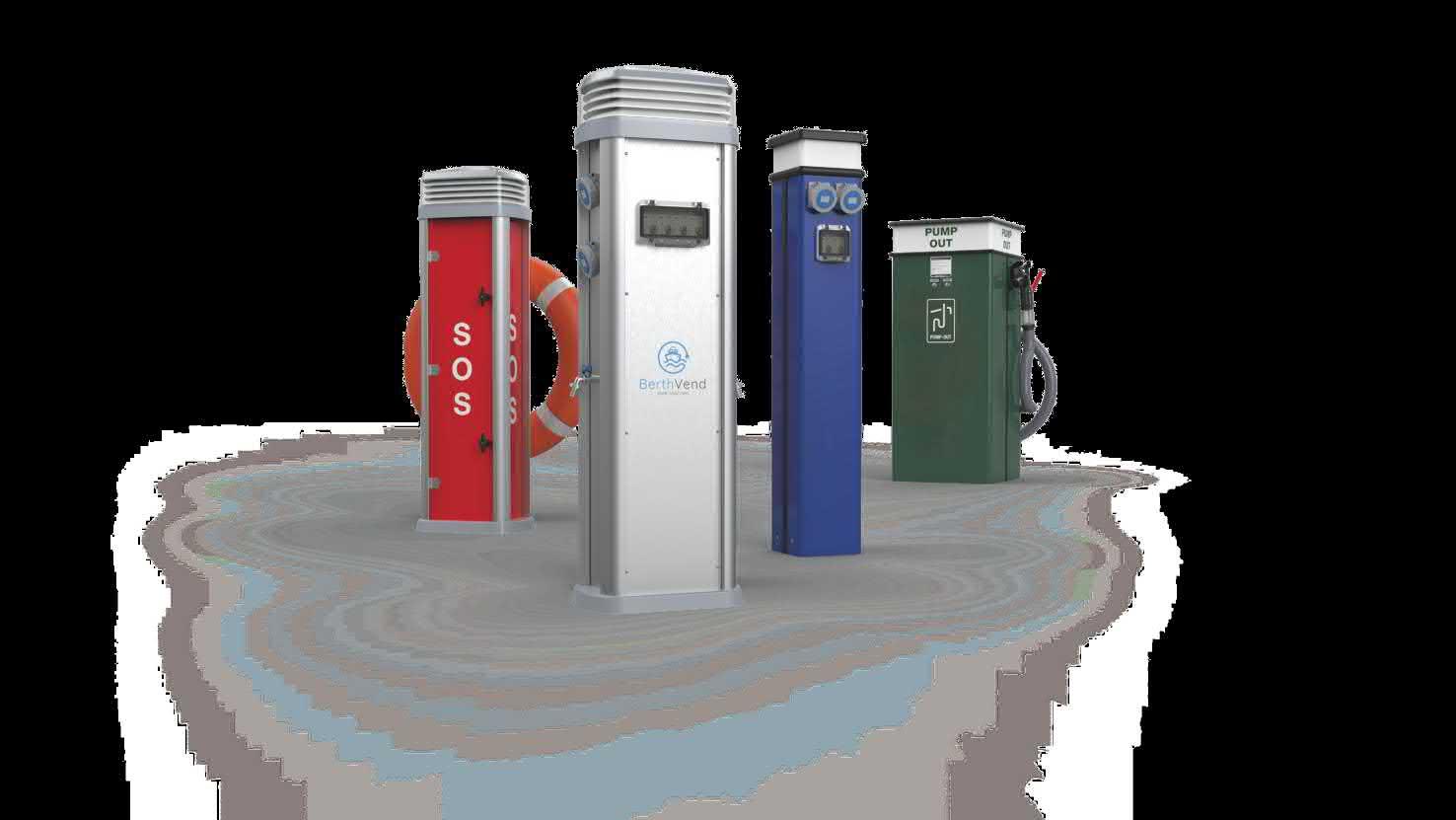
It’s no secret that the world is steering towards cleaner and greener modes of transport. As world leaders in providing service pedestals and associated products for marina and waterside destinations, and with over 10 years’ experience in the electric vehicle charging industry, Rolec are able to provide a solution to suit your electrification needs. Enabling you to offer your visitors a seamless charging experience, whether it’s for electric vehicles or electric boats.

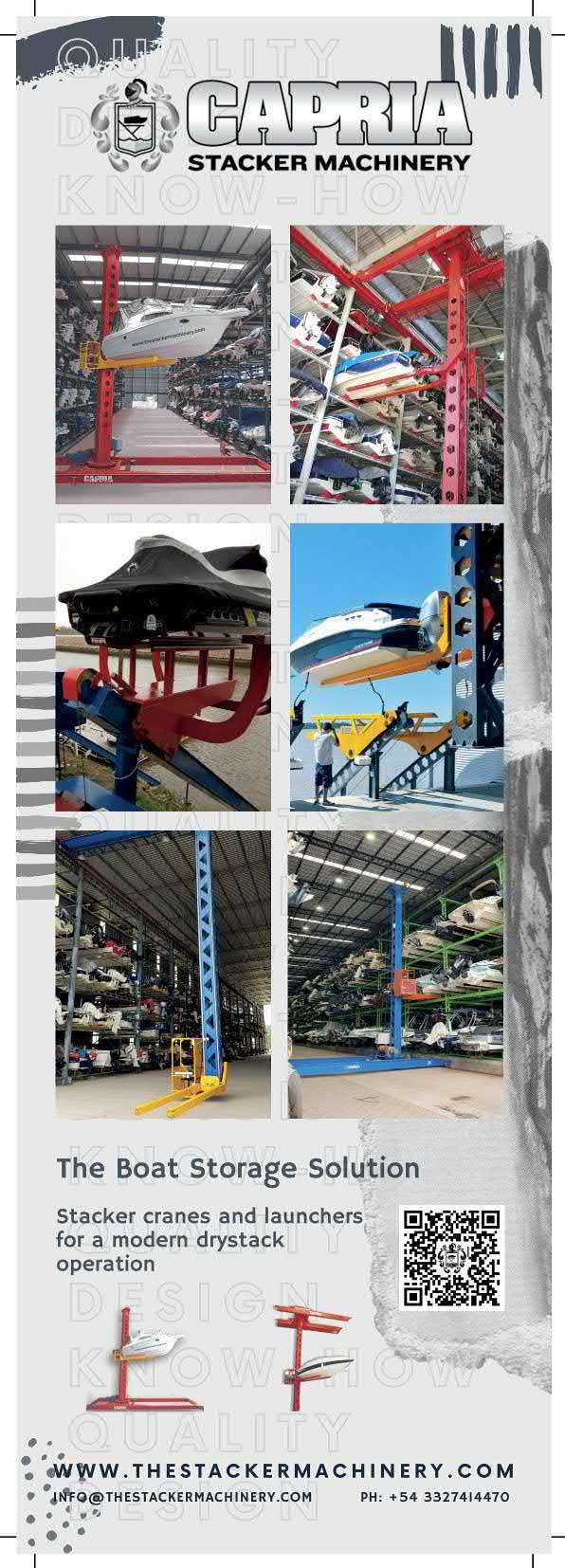
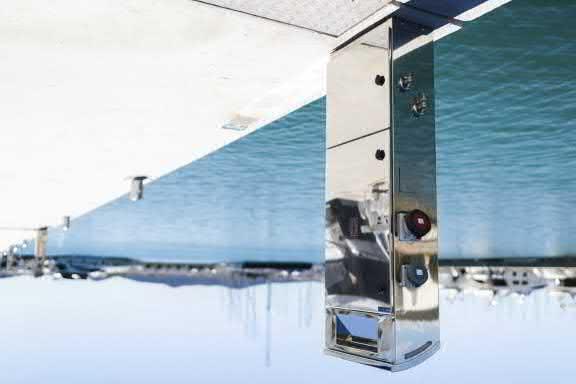
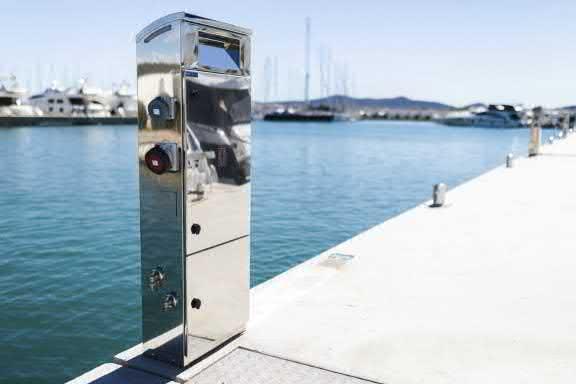

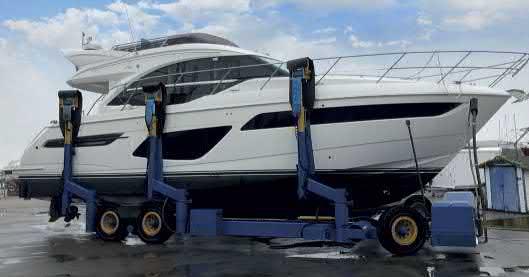


we don’t avoid conflict and are used to talking about it.
MD: Over the last 32 years, Steven was able to undertake a considerable amount of development due to the spirit of the age. I am now faced with another reality so there are new and other challenges in the business. We share common standards and values. Conflicts are handled very discretely; familiarity and mutual respect are key to being able to listen to each other and find good solutions.
Q: These last couple of years have delivered a remarkable volley of major challenges. How have you managed?
CK: The pandemic was a challenging time to say the least. While marinas in many parts of the world had to shut down, the Dutch Government adopted a laissez-faire attitude and left this decision up to the different regions and municipalities. We were allowed to stay open, but our facilities (including the office and sanitary blocks) were not. With airports, restaurants, bars and other places of leisure closed, the marina became the only get-away for the Dutch.
This presented many problems. With the lavatories closed by government rule, we quickly built an outdoor toilet
and water tap to meet the basic needs of our customers. With the office closed (except for a window through which we communicated), digital communication became more important. We posted regular updates on our website and social media about the ever-changing COVID guidelines. We trained our staff to work with social distancing in place and we lowered the rent for our restaurant tenants by 50%, thus helping them to stay afloat during lockdown.
At our marina, the biggest trend is the influx of new boating customers since the start of the pandemic. The Dutch are a sea-faring people, and the few of them that didn’t own a boat do now! Our waiting list is longer than ever, so long in fact that we had to stop new applications altogether. While this is a welcome evolution, we still face many challenges including dealing with the worldwide price surge of both material and labour, which makes bridging the gap of income lost during the pandemic all the more difficult.
Sustainability has always been a priority for us. We have been a Blue Flag marina since 1995 and have been awarded the Green Pennant as one of the most environmentally friendly marinas in the country. When it comes to trends like boat-sharing, we embrace these while staying slightly wary because they may also lead to overcrowding and an influx of
boaters with little experience. We try to educate our customers as best we can, both in terms of marina rules and boating etiquette. Social media are a part of our communication strategy, José Juan Calero (JJC) (Puerto Calero) is currently managing director of a group of three (soon to be four) marinas in the Canary Islands. He inherited the role from his father, who built

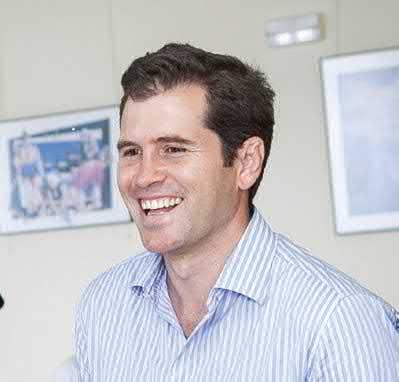
Lanzarote’s first marina village, Puerto Calero, (founded in 1983), based on an inspired vision after visiting marinas in the US. As keen sailors and water-sports enthusiasts, José Juan and his brother Daniel share their father’s energy and determination, bringing top-level racing and cruising events to the islands, and creating a luxury nautical brand.

but in recent years, we have noticed that our customers – both young and old – mostly come to the waterfront to disconnect. We believe that our family marina, that has been here for more than a century but has far from stood still, is the perfect place to do just that.
RP: All marinas have been required to modify their business model in the last ten years, according to a new generation of customers, some of whom are more interested in chartering boats, while others ask for dry storage services, and a good number have less money to spend on boating than their parents.
Competition among marinas has become stronger because of a quickly growing offer (42 new marinas have been built in the Mediterranean in the last ten years, in the middle of a financial crisis that reduced the number of actual and potential customers), but paradoxically, COVID-19 has proven that boating is still one of the safest and healthiest vacations, providing social distancing, freedom and fun. Even the youngest generation, who seemed to be only interested in long distance travel by plane, has rediscovered the pleasure of boating, and that makes us more confident about the future.
JJC: I won’t disagree that recent years have been very complicated. We have had to adapt quickly to a changing market and modernise accordingly. Having strong and aligned core values however has helped the process and our customers have remained loyal throughout, which is much appreciated. The qualities of this destination for boating means that, luckily, it is the gift that keeps on giving and so the pleasure that our customers derive from visiting the islands is always a fantastic boost.
NZ: We worked hard during COVID to keep spirits up by sending out clear and frequent bulletins to our customers about the changing situation – this received positive feedback. In terms of trends, we’re seeing shared boats (two friends buying a boat) and a number of boats planning to make a grand tour this season or the next.
MD: One of the biggest problems we encountered was the extent and complexity of the matter of abandoned yachts. With a lot of work and investigation we were able to generate some good solutions in this area. This experience has led us to take part in an international working group on the topic, where we can contribute our
Steven and Maarten Desloovere (MD) (VY Nieuwpoort) The Club was founded 50 years ago and Steven has held the role of general manager for 32 years. He retires this year. Reluctant to shoehorn his son Maarten into


Maarten Desloovere
the management role despite recognising his suitability, he carried out a series of external interviews to find a new manager. Struggling to find the right candidate, he passed the decision on to the board of

directors, who proceeded to both propose and agree on Maarten’s appointment. Since then, the 1,000berth marina has continued to grow in stature, resonating particularly in customer-focused, youth-oriented and environmental areas.
knowledge to the problem of end-of-life boats.
On a personal level, given that we can talk very directly with each other, we can also make fast decisions. Facing a decrease in boat owners after 2008, we resorted to building up a young and dynamic team which meant that we were better able to address the needs of today and communicate with a changing market.
The above article is reproduced by kind permission of TransEurope Marinas and first appeared in the association’s newsletter. www.transeuropemarinas.com
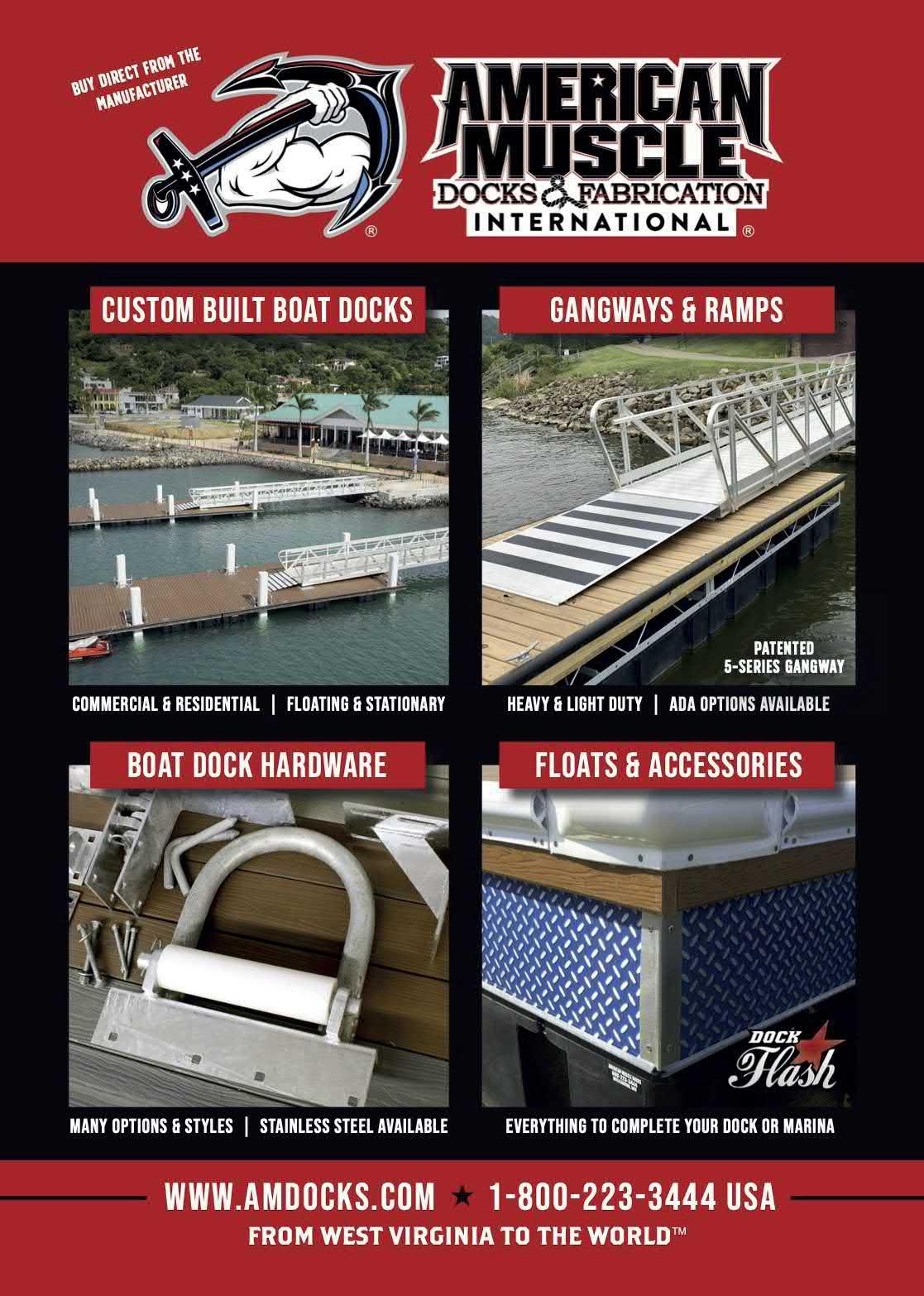

Nestled right at the top of the Adriatic Sea, Marina Izola offers a sheltered spot to berth up in one of the nearest tourist ports to Central Europe. Charlotte Niemiec invites marina manager, Vladimir Gavran, to talk shop.
Family-friendly and peaceful, Izola Marina is one of few marinas to lie along Slovenia’s tiny fragment of coastline, which stretches just 47km (29mi) between Italy and Croatia. It has recently joined forces with nearby Marina Koper to create a new brand – MarinaUp – and now offers a combined 800 berths.
While Marina Koper focuses more on transit and has fewer berths, it has an excellent logistical position.
“In order to achieve synergy and jointly promote both marinas, we act together under the MarinaUp brand,” Gavran explains. Both marinas are located in the centre of Izola and represent the shortest route from Central Europe to the sea.
The town of Izola is steeped in history, reflected in the architecture,
culture and authentic local people.
The old town, which flourished during the Venetian Republic, boasts

charming and colourful houses, narrow winding streets and a lively Mediterranean atmosphere. Izola offers plenty of sea and seaside activities, exceptional fish-based cuisine, excellent wine and olive oil, and has the picturesque Istrian countryside on its doorstep.
Construction of Marina Izola began in the 1990s and major works continued 20 years ago with the Amfora building – the heart of the marina. This hosts the marina reception and offices, a bar and restaurant, agencies selling and renting boats, and a nautical equipment store. While charter opportunities are plentiful in Slovenia and neighbouring countries, Gavran believes that “owning a boat in Slovenia is more popular than charter. I think it’s a question of ‘emotional relationship’ between the owner and the boat.”
On the ground floor of the Amfora building there is a multipurpose hall able to accommodate up to 100 people. Work to improve the marina continues, with the addition of an extra breakwater

a few years ago which, together with the original breakwater, provides very good protection for boats in the marina.
In 2020, the marina was bought by Koper-based company Grafist, which also owns Koper Marina. Over the last two years, Grafist has made several infrastructure investments, and Gavran foresees more in the future.
“I’m a lawyer at Grafist and I was involved in the procedures for the purchase of the marina,” he explains. “My primary goal was to organise the operations of the marina, which required rearranging financing, solving legal issues with various entities, solving open issues with the state and the municipality, and improving the operations themselves. We were very successful in these activities and the results are now very satisfying. Marina Izola still has a lot of untapped potential and opportunities for development. My challenge for the marina is for it to reach its full potential.”
One significant change has been the addition of 161 berths at new floating piers designed and built by Italian company Ingemar. All of the other piers at Marina Izola are fixed. “We decided to add floating piers mainly because of their practicality and ease of construction,” says Gavran, and “we chose Ingemar mainly because of their reliability and proximity. I have to praise their attitude and seriousness – their engineers gave us all the support we needed.”
The berths are positioned on three floating piers connected to the quay by a long service pier. Stretching almost 500m (1,640ft) in length, they were built using floating modules of different widths, a steel supporting structure and tropical timber decking. The central service pier is anchored to the seabed with steel piles, while the transverse piers are anchored with a system of chains and concrete anchoring blocks. Each berth is equipped with water, electricity and video control.
“Construction went smoothly,” says Gavran. “We obtained all operating permits a few weeks ago, so the boats will start mooring in coming months. The interest in berth rental is considerable.”
“In the future, I would like the marina to develop into a modern destination in terms of technology and service. But in general, in my opinion, a marina must
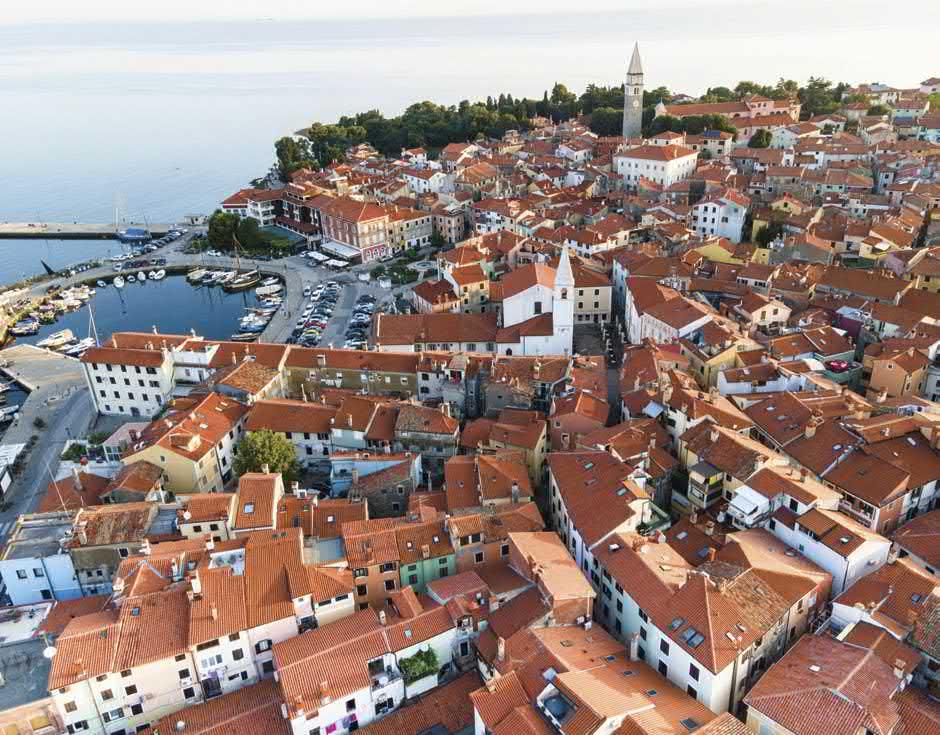
be more than that. The marina should not limit itself to the sale of moorings and services for vessels, but also provide guests with the richest possible experience. That is why I think that the environment in which the marina is located is especially important,” Gavran stresses.
“In Izola, we are lucky that the marina is connected to a small but charming fishermen’s town with a rich Istrian and Venetian cultural heritage, in which you can also find traces from Roman times. Our marina does not resemble an “all inclusive” hotel that is isolated from the environment, but lives with the local people and the environment in which it is located. In the future, I hope that this connection with the environment will be even greater and that the marina guests will feel like members of our community – like real ‘Izolani’.”
Today, the marina has around 800 moorings, with 650 at fixed piers and 161 at floating pontoons, all with electricity (220/380V), water and Wi-Fi. The power pedestals are manufactured by a local company, Felolux. Berth sizes range from 6m (20ft) to some that accommodate superyachts. Demand is high and the marina is almost full, even though it has gained some free space with the construction of the new piers.
mod cons Services meet all modern expectations. A diesel and petrol distributor is located at the centre of the marina and the marina boasts a 60 tonne travel hoist.
“We also plan to build a bigger slipway, which will be equipped with smaller lifts,” says Gavran. The marina works in cooperation with external contractors, offering maintenance services such as underwater parts, servicing and repair of engines, installation or repair of navigation devices, upholstery and joinery and repair, and installation of sails and masts.
“We have an external security system and the entire marina is covered by video surveillance. Izola is a very safe place, so we have no major problems with security issues.” Staff perform daily patrols of the marina and check the condition of the vessels, which are visible from the piers. At night, security services take care of safety.
Marina Izola manages the site using myMarina by Marina Master – an integrated cloud-based CRM. “myMarina gives us important support and it’s a reliable partner as we seek to modernise our work process,” Gavran notes.
The marina has been a proud recipient of Blue Flag environmental accreditation for more than 20 years and supports sustainable operations while constantly striving for improvement. Every year it adopts a programme of activities for effective environmental management and works with the local community to achieve positive results.






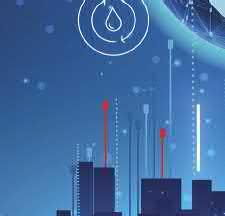




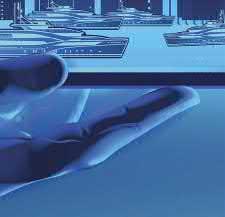










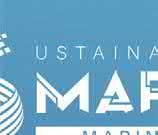

















The 2023 AMI Conference & Expo, organised by the Association of Marina Industries (AMI) and held Monday 30th January – Wednesday 1st February in Daytona Beach, Florida was pronounced a record-breaking success that attracted nigh on 1,100 attendees.
“This is by far the best event we have ever presented,” said AMI vice chair Rick Chapman. “From the preconference workshops and opening keynote on ‘Front Row Leadership’ to the ‘Future of Boats’ panel and everything in between, the content was on point. Even if the speakers shared things we didn’t want to hear, we needed to hear them.
“We experienced record-breaking attendance, our exhibit floor was sold out, our social night was the largest we have had to date, and there was an energy throughout the event that was hard to ignore. We look forward to building on this momentum as we head back to Fort Lauderdale,” he added.
Prior to the official opening of the conference on Monday evening, a full day was devoted to a host of optional programmes, ranging from the annual meeting of the American Boat Builders & Repairers Association (ABBRA) to specific educational courses that fostered leadership, team-building and coaching skills, as well as a marina tour.
The course options included the rebirth of the Docks & Marinas Short Course (D&M), originally created by Al Wortley at the University of Wisconsin, and assisted by Neil Ross. Long rated as the leading worldwide educational pathway and focused on combining both technical and broader approaches to address and solve various marina issues, the course then and now again also provides continuing education credits through the University of Wisconsin to those participating (needed annually for many professionals).
The course covered permitting, marina design, including for waves,
Marilyn Sherman’s keynote address focused on encouraging delegates to leave their comfort zone so as to be open to new opportunities.
revetments, bulkheads, pile systems for lateral loading and retention, the Americans with Disabilities Act, electrical design and code compliance, marina loads and moorings, as well as clean marinas, environmental education and recognition.
A new certification course for becoming an AMI Clean Marina Manager was also introduced, focusing on siting and design considerations for new and expanding marinas, habitat, vessel maintenance and repair, petroleum control and hazardous waste management, management of stormwater, sewage and grey water, waste reduction, disposal and recycling, as well as addressing boater education/ public education, aquatic invasive species, and increasing resiliency by looking at climate adaptation and sea level rise.
The third full day option was a Leadership, Team-Building and Coaching Skills course and the fourth was Marinas 101, a three-hour marina industry introduction course geared toward those individuals with little or no marina experience looking to get into the industry by way of an advancement opportunity, career shift, or an interest in purchasing or developing a marina.
The Marina & Boatyard Study Tour was designed to dovetail with Marinas 101 although could also be enjoyed on its own. Delegates visited two marinas as well as a lighthouse and museum –and the weather cooperated to make it a great warm afternoon.
Presentations within the actual conference started on Tuesday morning with a very energetic keynote speech “Front Row Leadership - How Top


A Leadership, Team-Building and Coaching Skills course was one of several options during a full day of pre-conference workshops.
Performers Never Settle for Balcony Seats” delivered by Marilyn Sherman. The stimulating talk focused on the need to leave your comfort zone so as to meet others and obtain opportunities that you would otherwise miss. Several attendees were very moved and inspired by the talk and by the end of the conference were still mentioning it as one of the highlights.
The second day’s keynote, “The Future is Here! Trends in Boat Design: Is Your Marina Prepared?”, was a panel presentation featuring Alex Cattelan, chief technology officer, Brunswick Group; Sean Marrero, chief strategy officer and president, Watershed Innovation, Correct Craft; and Dan Ryks, senior category manager electrification, Mercury Marine.
The discussion focused on where the industry is and where it is heading, particularly with respect to evolving boat design and powering of boats, and thoughts on how marinas will accommodate the changes. The consensus clearly was that the future is changing, but the approaches are still being worked out, including how the infrastructure will have to change to accommodate the new demands.
There is concern that electric power will not be able to meet all of the needs, at least not in the nearer term. Indeed, the emphasis on electrification is pushing the envelope both in terms of the design of boats and batteries and how to recharge them. As the discussion continued, Sean Marrero said flat out to the marina operators in the audience: “You’re going to be selling electricity at some point.”
AMI Conference & Expo is the usual venue for presenting awards to new Certified Marina Managers (CMMs) and Operators (CMOs). This year, AMI’s Training Institute welcomed 17 new CMMs and eight new CMOs to bring the current worldwide total to 504 for CMMs and 71 for CMOs.
New CMMs and CMOs have completed the Intermediate Marina Management (IMM) course, along with the Advanced Marina Management (AMM) course. Upon completion of both, each professional then submits an extensive application for review and approval by the CMM/CMO review committee.
Both virtual and face-to-face IMM courses are offered throughout the year, and interest is strong. “It is a very exciting time,” says training coordinator Merritt Alves. “AMI’s Training Institute is training and educating a record number of marina professionals each year, which leads to a record number of CMM and CMO designations.”
Shawn Macking, St Petersburg Yacht Club, St Petersburg, FL; Matt Creswell, CBJ Docks & Harbors, Juneau, AK; Travis Staats, Windward at Camachee Cove Yacht Harbor, St Augustine, FL; TJ Quandt, Port Olympia, Olympia, WA; Mary Hunt, Safe Harbor Cowesett, Warwick, RI; Jeff Durning, Safe Harbor Regatta Point, Palmetto, FL; Cody Bartro, MarineMax Houston, Seabrook, TX; Andy Caballero, Simpson Bay Marina, Sint Maarten, BVI; Jeremy Enck, Safe Harbor Aqualand, Flowery Branch, GA; Jason Breland, Chandler’s Landing, Rockwell, TX; Alex Turner, Grosse Pointe Yacht Club, Grosse Point Shore, MI; Destinee Hodges, HarborWalk Marina, Destin, FL; Rick Jacobs, Meridian Marina, Palm City, FL; Audrey Willmot, VIP Marinas, Volente, TX; Kori Derrick Cisewski, Bayport Marina Association, Bayport, MN; David Wirth, St. Petersburg Municipal Marina, St. Petersburg, FL; and Chris Scott, Safe Harbor Vineyard Haven, Martha’s Vineyard, MA.
Lynn Lovelady, Scorpion Bay Marina, Morristown, AZ; David Wirth, St Petersburg Municipal Marina, St Petersburg, FL; Jason Heywood, Safe Harbor Green Harbor, Marshfield, MA; Jarod Viers, Lake Powell Resorts & Marinas, Page, AZ; Kori Derrick Cisewski, Bayport Marina Association, Bayport, MN; Jon Perkins, City of Oceanside, North Oceanside, CA; Heather Mess, MarinaMax Inc., Clearwater, FL; and Jacob Podesta, Chandler’s Landing Marina, Rockwell, TX.
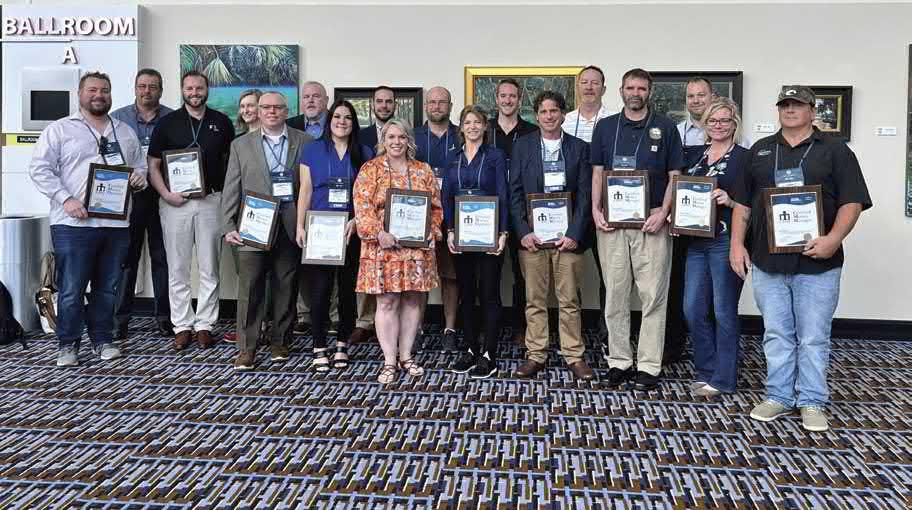
L to r (front): Jacob Podesta, Jason Breland, Jason Heywood, Destinee Hodges, Kori Derrick Cisewski, Heather Mess, Alex Turner, Matt Creswell, Audrey Willmot and Rick Jacobs. L to r (back): Andy Caballero, Mary Hunt, Jeff Durning, Chris Scott, Travis Staats, Jarod Viers, Jon Perkins and Jeremy Enck.



The session ended with lots of questions being raised by delegates, with answers basically boiling down to there being a lot of issues still to be worked out! The good news on that score is that the industry is reaching out to all segments, including numerous governmental agencies with their sometimes conflicting perspectives.
The main conference programme offered four to five different and simultaneous breakout sessions – three on the first day and two on the second day – for a total of 24 sessions covering a wide range of topics. There was something for almost everyone attending, and conflict for many who wanted to be in more than one place at once.
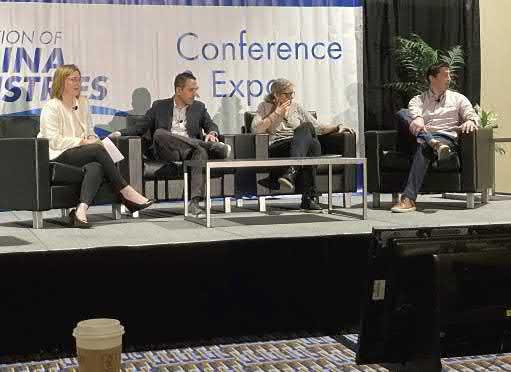
management strategy; clean water initiatives; grant funding; industry statistics; and more.
Presentations covered: communications and marketing; workplace investigations and hiring; the changing trends of boat ownership; dealing with disaster (hurricane and fire); technological advances; financial
Most of the delegates enjoyed the sessions, particularly the interaction and ability to focus on specific issues. There were many new faces, including marina managers and owners as well as other first-time attendees. Most of all, the delegates seemed to appreciate the willingness of those with more experience to share ideas and suggestions. One new attendee said: “I
Four panellists discussed trends in boat design in a second keynote presentation.
cannot believe the number of people who are willing to talk to me – I am getting some great ideas and suggestions.” Another noted: “I found out about things that I now need to think about.” There were updates on codes and other regulatory issues, and examples of better ways to do things, along with examples of what not to do.
There were also plenty of opportunities to meet and network. The exhibition hall, with 162 exhibiting companies, was particularly busy during break-out sessions and for the opening evening reception and the social event in the Coquina Ballroom was a big hit. The electric miniature golf was a highlight, along with other games.
AMI Conference & Expo returns to the Broward County Convention Center in Fort Lauderdale, Florida on 30th January-1st February 2024.








Two widely different floating structure projects that bring big benefits to small islands in Europe and South East Asia have recently been completed by SF Marina.
Gressholmen-Rambergøya, a short ride from the Norwegian capital Oslo, now has a novel floating dock with containment for rubbish that could otherwise blight the popular nature preserve. Hei Ling Chau – thanks to a new SF Marina floating concrete wave attenuator – provides Hong Kong with a new typhoon shelter basin.
Disposing of waste on a small island that has no vehicle access posed a tricky problem for Kommune Bymiljøetaten, the municipal urban environmental agency in Oslo. The solution, developed with SF Marina, was to devise a waste collection point right at the dockside. A small floating concrete dock houses three Molok Deep Collection trash containers that are emptied from the water using a crane mounted on a garbage collection workboat.
The project uses an SF Marina 4m (13ft) wide x 15m (49ft) long SF1040 floating concrete pontoon. Highly adaptable to a wide range of applications, this type of pontoon can be modified to meet the needs of virtually any project. Three holes for the Molok containers were cast into the structure
during manufacture at SF Marina’s Wallham facility in Sweden, shipped to Oslo and then floated to the island.
Used primarily as a dock section, the SF1040 is extremely stable due to its sheer mass and low centre of gravity. While the Gressholmen-Rambergøya floating garbage depot is located in a sheltered cove and anchored to the seabed with chains and anchors, SF Marina pontoons are engineered to withstand hurricane-force weather events.
Typically used on land, 60% of a 5m³ Molok container is normally underground—but, in the case of the SF Marina project, it is underwater. The cool surroundings keep odourproducing bacteria from forming and, as much of the container is hidden, the receptacle opening is low and thus accessible by children and those in wheelchairs. A 6m (20ft) walkway allows easy entrance to the dock from shore and accommodates the area’s mild tidal fluctuation.
Each container cover has a reusable inner sleeve that holds the refuse. The crane lifts the lid and contents, swings it over to the boat, and a worker pulls a rope that opens the bottom to spill the trash. Because of the containers’ large capacities, 80% fewer emptyings are required over standard-sized waste receptacles.
Part of Hong Kong, Hei Ling Chau is a small island situated off the east coast of Lantau Island that’s home to an addiction treatment centre and two correctional institutions. Due to frequent tropical cyclones in the region, the Hong Kong Government determined the waters off Hei Ling Chau’s western shore would make an ideal typhoon shelter basin.
SF Marina installed a 700m (2,300ft) long floating concrete wave attenuator. Prior to this, the basin was surrounded by a two-section fixed-rock breakwater that only protected the area under normal storm conditions. The Hong Kong Government chose SF because it could manufacture the wave attenuator quickly in Asia and has a proven track record of installations successfully surviving severe storms.
The Hei Ling Chau project comprises 30 sections of 20m (66ft) long x 5m (16ft) wide 65-tonne SFBW500 pontoons and five sections of 20m (66ft) x 4m (13ft) 55-tonne SFBW400 pontoons. With a height of 1.8m (6ft), they share a 0.5m (1ft 7in) freeboard and 500kg/m² buoyancy rating.
The pontoons and anchors were manufactured by SF Marina Korea and shipped to Hong Kong. They were unloaded, floated into position using a tug, and installed.
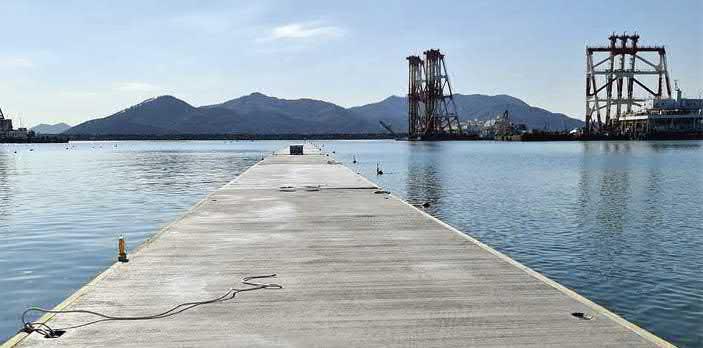


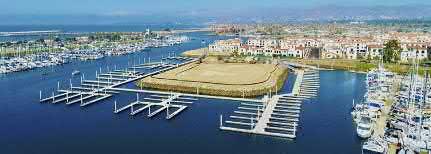





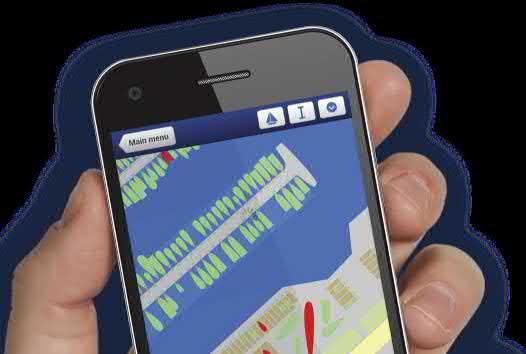




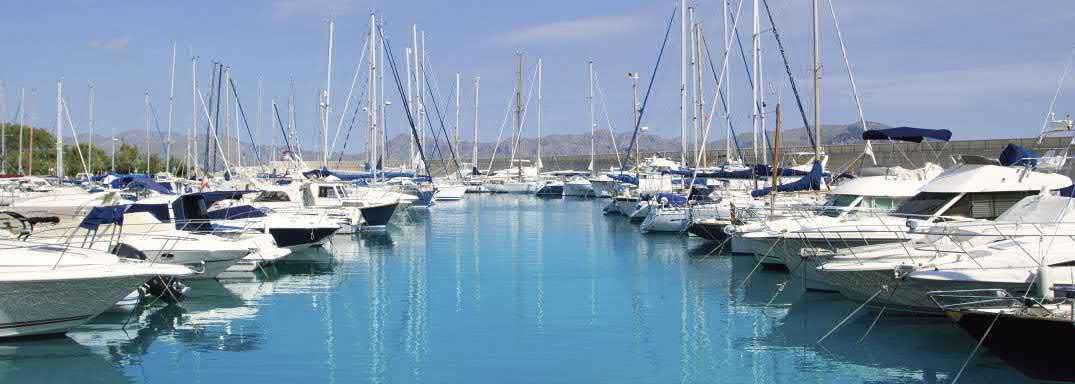



by Oscar Siches
Virgil, in The Aeneid (Virgil, Aeneid, II, 49), proclaimed “Whatever it is, I fear the Greeks bearing gifts” when recounting the Trojan War and the Greeks’ deception with the wooden horse. This cautionary tale is still relevant, warning us about seemingly harmless things or actions that could have hidden, unexpected consequences. Today, 2,000 years later, I’m going to flag up Virgil again and say “beware of electric propulsion and its promise to be a universal solution to pollution.”
Electric propulsion is an old concept. Moritz van Jacobi, a German engineer, built the first electric boat in St Petersburg, Russia in 1839. However, its popularity dwindled around 1920 in favour of fossil-fuelled engines, which were lighter in weight (virtually no batteries) and easier to transport and

store. All good – until we realised a few years ago that we’d neglected the environment. Welcome back electrics…
Electric propulsion is undoubtedly a solution to pollution caused by emissions, but the marketing of this apparent miracle-solution fails to mention potential issues that could make the practical use of electric boats less rewarding than promised.
The most advanced types of electric recreational boats currently rely on two power sources: fuel cells and batteries. While fuel cells are associated with hydrogen, they can also work with ethanol, diesel oil, gasoline or gas, with varying emissions and fuel efficiency/ power output.
When used with hydrogen, fuel cells do not generate emissions. However, hydrogen is not easy to transport as it must be pressurised and cooled to -253°C or pressurised at room temperature to 350 or 700 bar to manage the volumes. To put this into perspective, the air in a diving cylinder is compressed to 220 bar (though some can handle 300 bar).
Fuel cells are stackable, and power can be increased by adding more cells. The cells themselves are relatively small, with a 30kW (40hp) cell the size of a standard laser printer. The good news? This year, Neo Orbis will be launched in Amsterdam, and it will be the first boat in the world using hydrogen from a powder source (sodium borohydride). This is a big step forward.
In June 2022, I was aboard a 20m (66ft) sailboat in Sneek, the Netherlands, that had two 30kW cells and two 20-litre hydrogen tanks each at 350 bar. With 40 litres of hydrogen, the boat could travel 100 miles at eight knots, outperforming a conventional engine four to one. However, the lack of hydrogen refuelling stations is a major obstacle to widespread adoption, and
Above & below:
Ecolution solutions including 300 bar hydrogen containers (left).
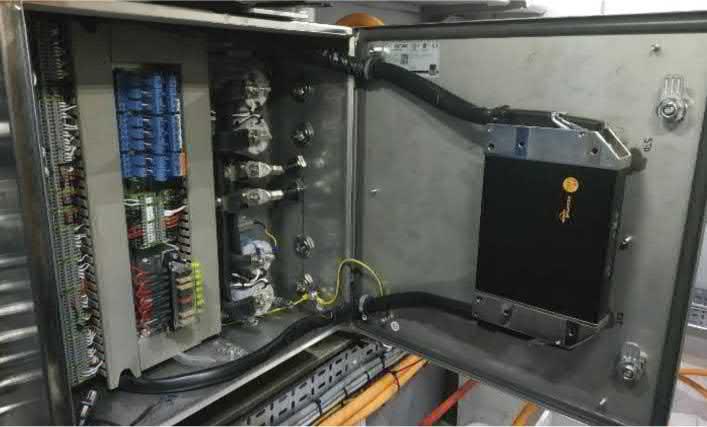

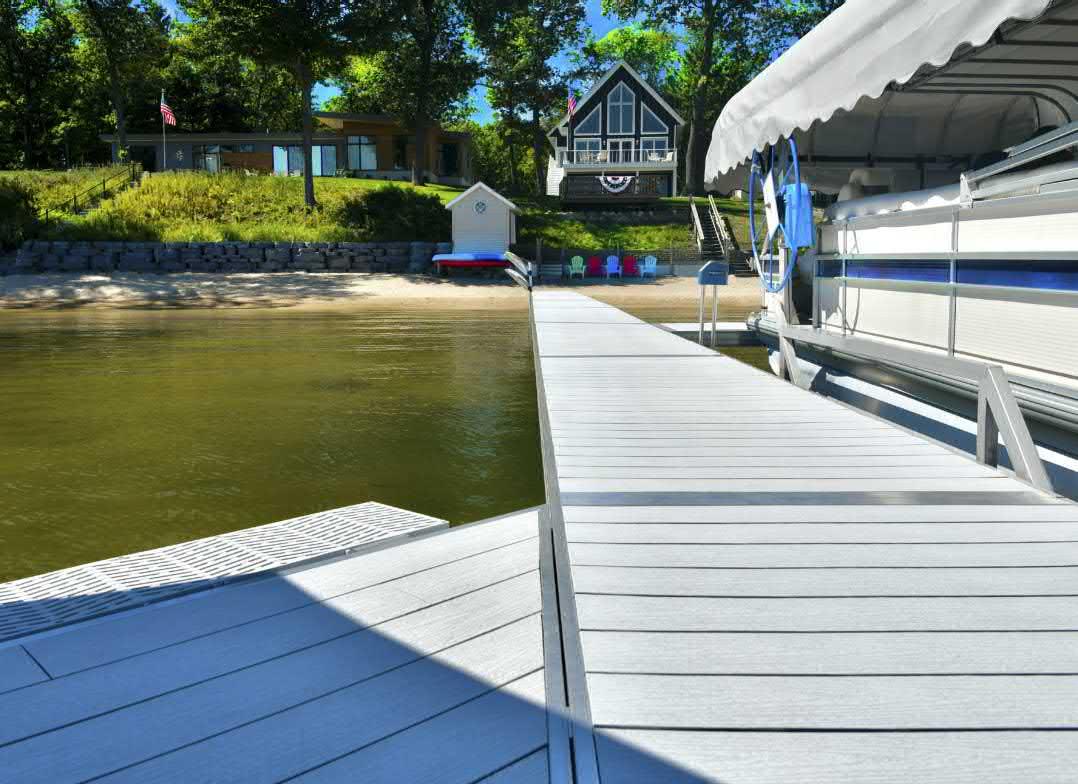










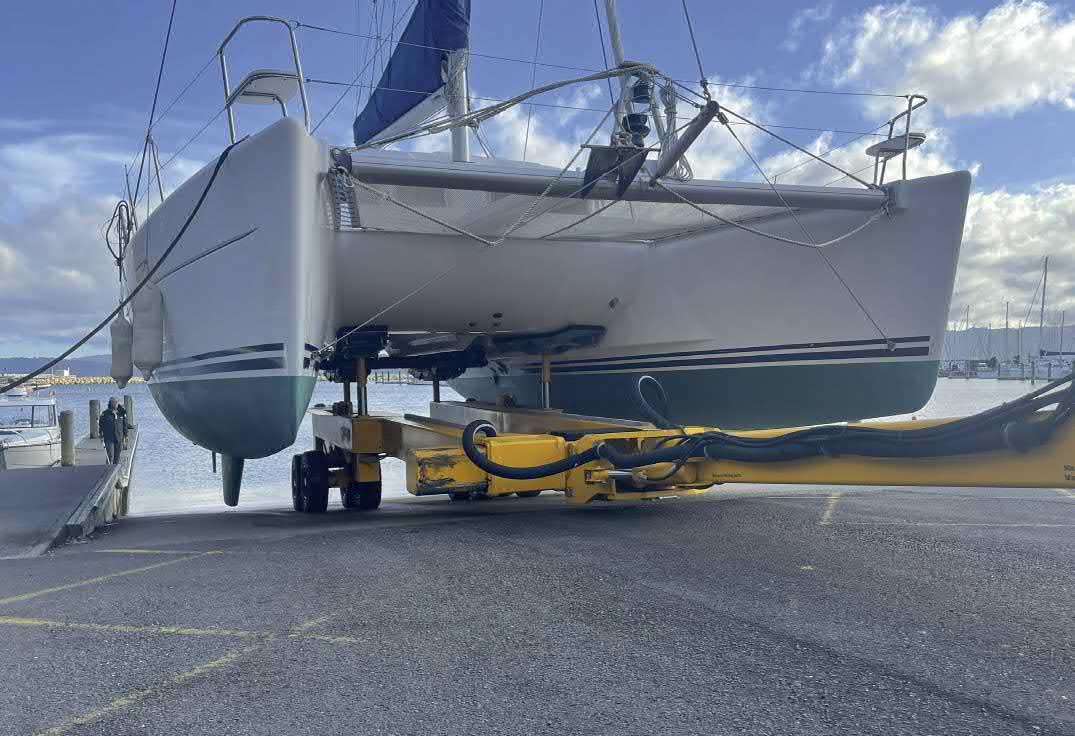

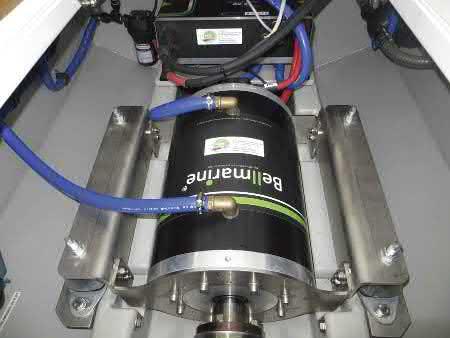
hydrogen propulsion is currently three times more expensive than diesel.
The most common types of batteries are lead-acid (PA) and lithium-ion (IL). Both types are heavy, with lead-acid batteries being the heaviest. Lead-acid batteries are also bigger and must be installed in a vertical position because of their vents or plugs. By contrast, sealed lithium-ion batteries can be installed in any position. However, there is a slight risk of explosion with sealed batteries, although this is a rare occurrence with lead-acid batteries.
One of the first things that users may notice is that the real autonomy of the batteries is often less than advertised. As for cars, calculations for battery life are made under ideal weather conditions and at an ideal battery temperature. However, when batteries become hot, they lose their ability to deliver energy. If the boat is heavily or unevenly loaded, it will demand more power from the engine, which will in turn require more power from the batteries. Therefore, every sailor must become familiar with the new propulsion system and use it with reasonable caution.
The age of a battery is based on its
Electric motor maintenance: Ecoboats, Australia. Below: TopDutch eco vessel moored up and under sail.
number of charge cycles, similar to how aeroplanes are aged by number of take-offs and landings. While batteries are not eternal, current batteries have a lifespan of between 3,500 and 5,000 charging cycles, which for weekend and vacation purposes equates to approximately 170 cycles per year. This provides a theoretical lifespan of between 20 and 35 years but batteries deteriorate throughout their lifespan, and the average lifespan of a boat battery is only five to seven years.
As yet, we do not have regulations governing the recycling of the enormous number of boat batteries that we will have by about 2040. And batteries are, and will be, very expensive. Marinas must adopt the necessary standards as it will be their responsibility to dispose of old batteries legally.
Ports will also have to decide on the type and number of pedestals they install. One per boat? Not very efficient, unless one is installed for every electric vessel that spends more than six months per year in port. Slow or fast charging? In my opinion, fast charging will be necessary for port service vessels or fast passenger boats.
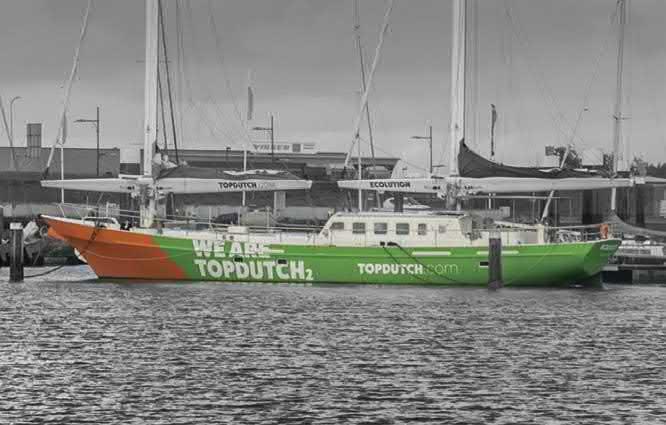
of the vessels that require them. Permanent/long term berth holder vessels will merit the installation of their own pedestals and transients will need to be assigned to berths that have charging ability. Why? Because few ports will be able to afford a complete electrical installation while maintaining traditional pedestals for boats with normal engines.
The learning and accustoming period should be spent with a hybrid system: in addition to batteries and a charging system, a generator that allows a return to port at a reduced speed. This system can be purchased or rented by the boat builder, marina or club. Ports should employ more members of staff and boost their towing capabilities as the number of electric boats that run out of batteries before returning to port will likely be high. Maritime Rescue cannot be expected to rescue all the electric propulsion ‘apprentices’.
Having listed some of the situations
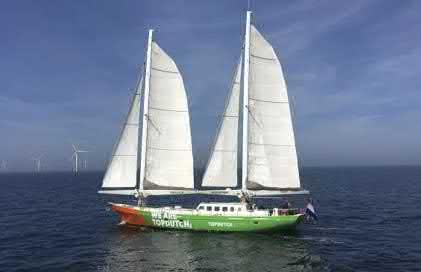
Batteries can be charged in three ways: via the traditional pedestal (charger on the boat, slow charging); slow charge (the charger is in the pedestal and it sends direct current (DC) to the batteries as with electric cars); and fast charging (the same method but with high amperage – a costly medium to high power electrical installation). When electric vessels begin to proliferate, ports must install battery charging pedestals to meet the needs
that we will encounter when adopting this technology, we still need to plan the training of port personnel. They must be trained to control and fight lithium battery fires, which require special equipment and protocols. Grouping electric boats in a specific area where there are more fire-fighting resources for lithium batteries will enhance security, as will ensuring the free passage of fire trucks to that same area.
Electric propulsion is efficient, safe, and in most cases, cheaper than hydrocarbons. It is here to stay, it will be regulated, and it will evolve rapidly in the coming years. However, we still have a long way to go to be ready to receive these vessels of the future in our ports. Knowing how to choose the system and manage well-planned and sufficient logistics is paramount. Then we can purchase an electric boat and christen it “Volta”.




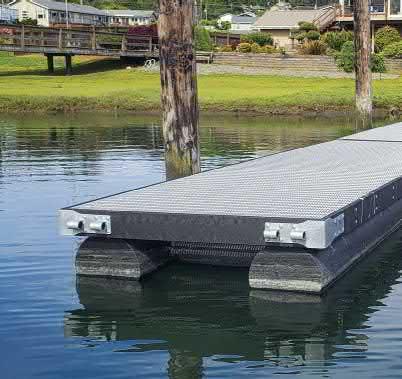
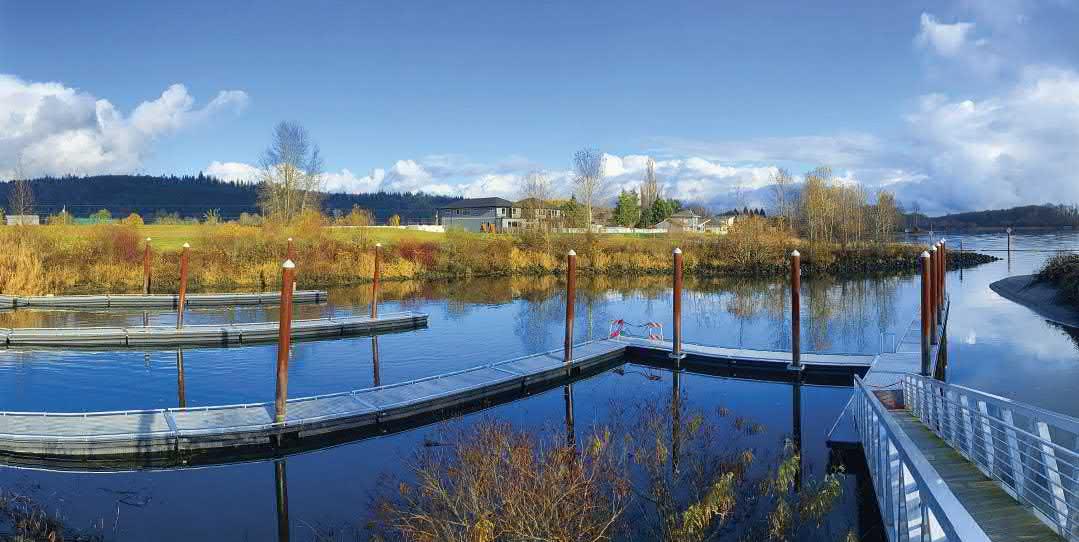
Alicante, chosen for the fifth time as the starting point for The Ocean Race 2023, is one of three race venues to benefit from floating pontoon arrangements supplied by Grupo Lindley companies.
The public entity Generalitat Valenciana, through its company Sociedad de Proyectos para la Transformación Digital, contracted Almarin to install and subsequently remove floating and mooring infrastructure for the regatta and support boats in Alicante.
A total of 360m (1,180ft) of Lindley floating pontoons, and several anchorages and swing moorings to moor the boats in case of emergency, were installed for the support vessels of the participating boats.
From Alicante, the regatta sailed to Mindelo on the island of São Vicente (Cape Verde). At this stop over, Lindley Marinas built and installed the floating infrastructure to receive the regatta and support boats. Local port authority ENAPOR awarded the contract for the supply, installation and removal of 140m (460ft) of pontoons with bow moorings for the event.
Access by two gangways from the fixed jetty through bridgeheads designed and
installed by Lindley, including water and electricity services, ensured that the fleet had proper conditions for their stopover in Cape Verde.
After the South Africa (Cape Town) stage completes, the fleet will disembark at Itajaí (Brazil), where Lindley Marinas and its local partner have built and installed floating infrastructure for berthing and mooring. The pontoons were built locally using reinforced concrete pontoons with polystyrene core. After the event they will be re-used for the neighbouring Marina de Itajaí, built by Lindley in two stages in 2015 and 2018.
“From Almarin and Lindley, we’re honoured to contribute to this fantastic project where the best regatta teams compete, and also to be able to join the event’s motto based on sustainability, recycling and reusage for protection of the oceans,” says Lindley Marinas CEO Luis Vasconcelos Dias.
www.lindley.pt


Largs Yacht Haven, a popular Yacht Havens Group marina on Scotland’s Firth of Clyde, has invested in a new 75-tonne Wise boat hoist. The machine replaces an ageing 45-tonne hoist that has been on site for over 30 years, and works alongside an existing 70-tonne hoist to enhance yard operations.
“With our brand new hoist comes brand new technology,” explains marina manager Dave Hewitt. “It will allow our boatyard operators to move around the hoist while manoeuvring, rather than operating from a fixed location on the machine.”
“Working with Wise, we were able to specify the exact features we wanted ensuring we are able to offer far more than purely the increased weight. For example, our new hoist comes with greatly improved LED lighting to make emergency night time lifts much safer. The hoist is operated via remote control making it safer for our boatyard team, and we have automatic monitoring sensors that feed back real-time data to the manufacturers,” Hewitt adds.
Larg’s boat lifting facility operates seven days a week with emergency 24-hour lifting available. For small or quick jobs, boats can be held in the hoist for an hour, over a tea break, or overnight. For longer periods of storage, vessels are positioned in the secure boatyard.
The delivery is one of several boatyard equipment investments made by Yacht Havens Group this past season. In addition to the Largs hoist, Lymington Yacht Haven took delivery of a new 60-tonne hoist, and Yacht Haven Quay Plymouth purchased a new Wiggins Marina Bull drystack forklift. www.wiseboathoists.co.uk
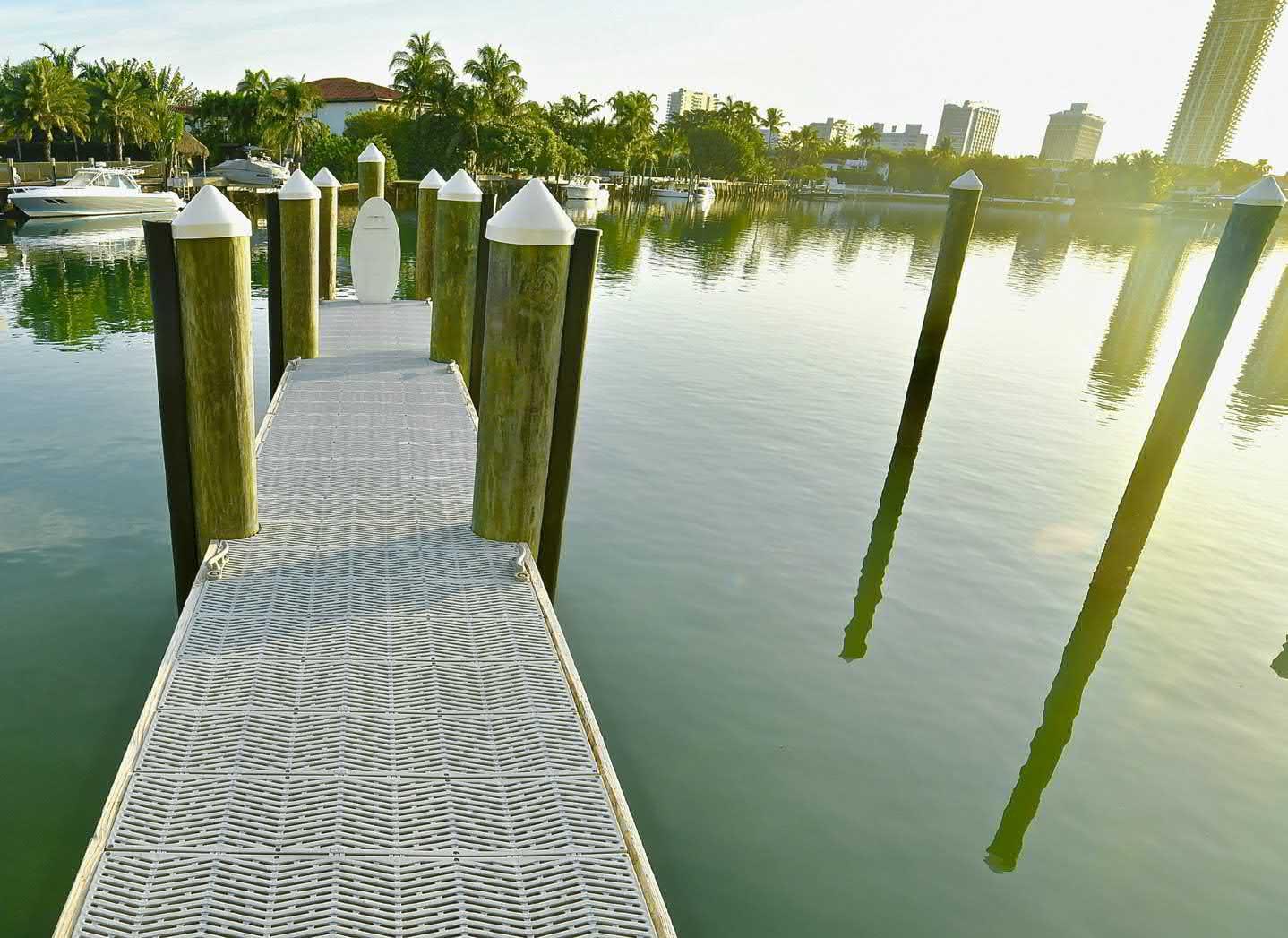

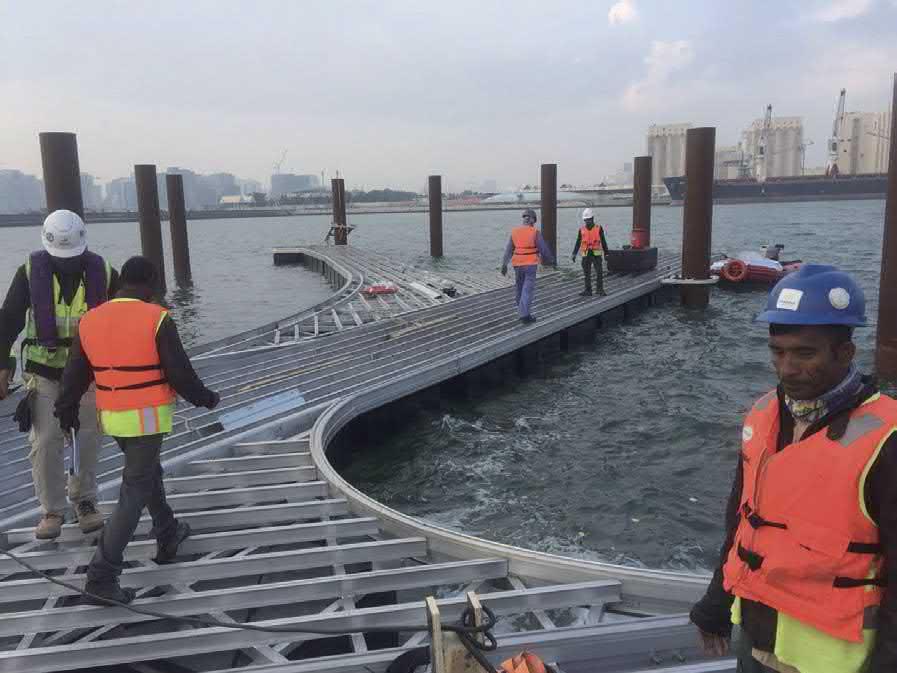


To further bolster its increasing sales success with LifeLadder and complementary products, Danish company PortSafety has attracted investment from leading maritime company Ultranav, and also secured additional funding from Vaekstfonden – the Danish Growth Fund.
Per Lange from Ultranav, who has more than 40 years of maritime and shipping experience, joins Port-Safety as its new chairman. “Port-Safety has developed a unique and patented product that can make a real difference in critical situations within the maritime world,” he says. “On top of the safety improvements, it is also a very convincing attribute that LifeLadder offers to cut carbon footprint to less than half compared with traditional solutions.”
Lange believes that Ultranav’s strong international network could benefit Port-Safety in the future, and managing director Kim Haaning welcomes the opportunities this could bring. “We are excited to have closed this deal as it allows us to accelerate our global
growth ambitions and further improve our contribution to saving lives,” he explains.
“Ultranav comes with a proud maritime heritage, market insights, and a strong network across customers and suppliers. We look forward very much to the value this new cooperation can bring.”
LifeLadder was launched in mid-2018 and sales have reached more than 30 countries. Additional products, focused on solar powered lighting to ensure the access to safety is visible at night, have been
Spanish company Almarin has redeveloped its wellestablished Balizamar buoy design, and launched it as the EVO.

Balizamar EVO buoys benefit from rotomoulded polyethylene modular components to enhance visibility and lower maintenance costs. The inner structure is made of galvanised steel by immersion and the top mark is constructed of stainless steel. The hull is rotomoulded and filled with closed-cell EPS foam to ensure buoyancy.
“The design of the Balizamar buoys, which dates to 2010, has been updated to meet current needs,” says Almarin director Aleix San Vicente. “While an improvement in materials was made in 2013 with the change from GRP to stainless steel, the new EVO buoys now have improved day marks while retaining the robustness of the original design.”
“This innovative and versatile system offers improved visibility, lower repair costs in the case of damage, and improved aid identification without limiting the colour only to the hull,” he adds.
Almarin currently offers two lines of navigation buoys: the new EVO range and the superior Guia range www.almarin.es
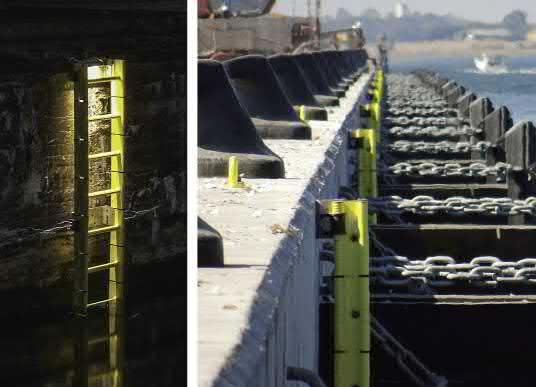
created, along with products focused on quay wall safety.
www.port-safety.com
The D-Marin marina group has introduced ‘smart pedestal’. The product, aimed at revolutionising customer experience, has been developed in-house to fully digitise energy consumption, digital payments, remote metering and control.
Customers will no longer need to enter the marina office or queue and wait for energy supply. Instead, they will have full control of the opening and closing of power sockets and remote measurement of consumption, as well as full control of costs. The key benefit of smart pedestal is that it can be controlled by the customer online, all at the touch of a button, giving customers the ability to personally manage their energy supply.
D-Marin chief information officer, Michal Maslowski, said: “We’re proud to be delivering another D-Marin digital solution to all our premium marinas this year. It
follows the launch of our twominute online booking system in 2022 and is another huge step in enriching the customer journey with innovative solutions as part of the ongoing ambitions of

the D-Marin digitalisation strategy.”
Smart pedestal will be rolled out to all marinas, retrofitted to existing pedestals, throughout 2023. www.d-marin.com
ASAR/GCM Safe Harbour
Drystacks, USA 25
American Muscle, USA 39
Aqua superPower, UK 50
Australia Marina Engineering, 48
Bellingham Marine, USA 7, 9 & 11
Bluewater
Marine & Dock, USA 50
Boatlift, Italy 26
Capria, Argentina 36
Conolift by Kropf Industrial, Canada 10
Cutting Brothers, Germany 56
DualDocker, Austria 22
Flovac, Spain 59
GH Cranes & Components, Spain 28
Gigieffe, Italy 24
Golden Manufacturing, USA 14 & 15
IWMC 2023, Portugal 47
Ingemar, Italy 12
Inmare, Italy 48
Lindley, Portugal 24
Livart, China 56
Marex, Croatia 36
Marina Master by IRM, Slovenia 50
Marina Projects, UK 60
MARINAGo by Scribble Software, USA 33
Marinetek, Finland 4
METSTRADE, Netherlands 18
Molo, USA 20
Monaco Smart & Sustainable Marina, 42
Pacific Netting, USA 48 & 54
Pacsoft, New Zealand 42
Perspective Products, USA 52 & 56
PierPump by Vogelsang, Germany 8
Plus Marine, Italy 46
Rolec, UK 35
Ronautica, Spain 28
Roodberg - a brand of Frisian Industries, Netherlands 52
SF Marina System, Sweden 2
Seaflex, Sweden 6
Seijsener, Netherlands 10
Superior Group, Australia 42
Swede Ship Sublift, Sweden 36
ThruFlow, Canada 26
Walcon Marine, UK 27
Wiggins Lift Co, USA 54
The Italian Tourist Ports Association, Assomarinas, and Aqua superPower are to collaborate on the installation of electric boat charging stations in the marinas of the Assomarinas network. The two parties will jointly promote electric boating as a benefit for the nautical market and the environment.
Through the partnership, Aqua will supply and install its high-power smart grid marine chargers at no cost to the site operator, creating an infrastructure for electric boats and charging corridors along the entire Italian coast.
Assomarinas has been operating since 1972 to create a network of accommodation facilities for leisure boats along the Italian coast and strengthen the exchange of information and services between tourist port operators. The organisation has over 90 associated marinas and its partnership with Aqua will support group members in achieving their sustainability and decarbonisation goals. Foundations will be laid for establishing a network of chargers.
“Assomarinas shares Aqua superPower’s long-term vision of a growing electric boating market and is delighted to cooperate in this important transition. Marinas need to be prepared for the new needs of electric boaters, and they must provide a reliable network of fast charge stations to make the new electric propulsion technologies more viable and enjoyable, for the benefit of the entire global nautical industry,” says Roberto Perocchio, president of Assomarinas.
“We look forward to working with Assomarinas as marine fast charging partner to help their members reduce the impact of boating on the marine environment,” says Aqua superPower CEO Alex Bamberg. “Access to charging infrastructure that offers a reliable plug and charge experience, offering features like charge point visibility, is essential for boat owners if they are to develop the confidence to
transition away from liquid carbon fuels. In partnering with Assomarinas, we will be able to develop fully connected marine fast charging infrastructure

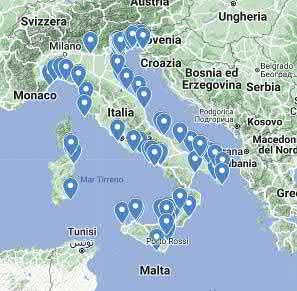
There is no cost to the marina as regards the installation and network infrastructure. Aqua’s business model is to build, own and operate the network of high-powered chargers and then manage these assets via the cloud. Aqua provides a fully funded turnkey solution. This includes everything, from upgrading grid connections through to 24/7 customer care, the hardware, the Aqua cloud backend system, which drives payment systems, customer care, charging session management, and unique connected services between Aqua’s cloud, charger and vessel.
Aqua manages the entire installation service via its own deployment team and certified contractors in various countries. www.aqua-superpower.com
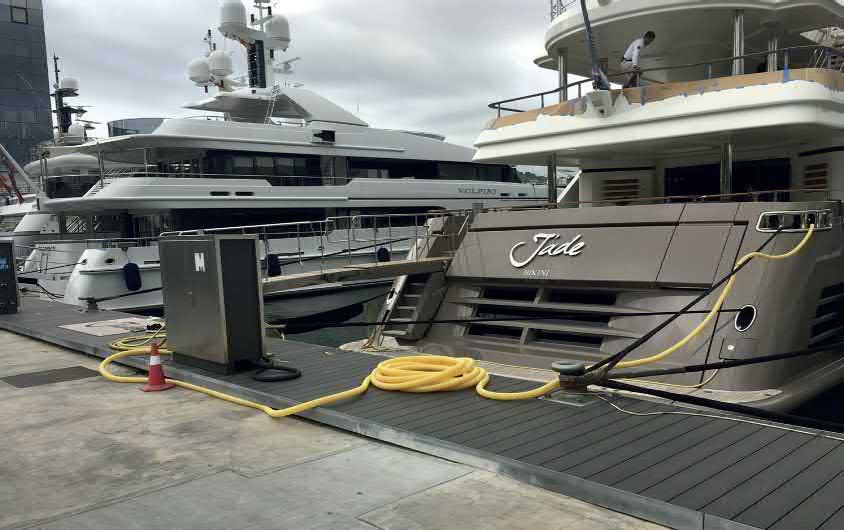



Vacuum sewerage systems are ideal for use in marinas and ports of any size.
The Flovac system can capture sewage and bilge water from boats and all facilities around the marina complex.
No electrical power required at dockside Discreet, small diameter pipework
No risk of water contamination
Validates MARPOL certification
Eco-sustainable system
Ease of installation
No odour, no spills



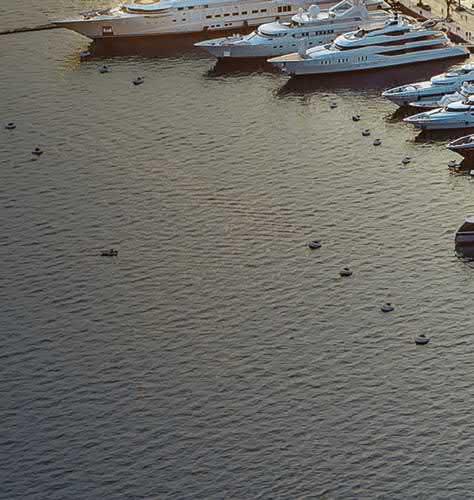
Concept
Feasibility
Business
Marina
Tender
Marine
Environmental
Property

